2023 in Review
No replays 😊
In order finished
In order finished
193 Games
Speaking strictly on 'Around the World,' the game portion of 3D Atlas, this is horrifically weak. The information presented in its trivia questions can be gleaned from the main program's statistics and multimedia videos. For every vexillological vexation there comes a quandary about orchid imports for three periphery states. Be asked to identify a country from its capital, then identify another from a collage. It is altogether boring at best. Points are converted to miles, and every three questions you trade in your miles to select a destination in your quest to circumnavigate the globe. Efficient travel relies on deeper geographic knowledge, but outside multiplayer (which I didn't even know the 3DO supported) it hardly matters.
Where 3D Atlas shines is as an early multimedia font of encyclopedic knowledge. Physically manipulating the globe is not the topic of interest, but the supplementary videos, renders, and tools. Abound in 3D Atlas is Marshall McLuhan's notion of the global village, making the planet metaphorically smaller through easy access to international knowledge and peoples. Though this often presents itself here, as elsewhere, in the exacerbation of differences between the Western world and that of the Other, that global-mindedness was a reality throughout the 1990s. It is thereby unapologetic in its effective appropriation of signifiers of the Other, believing this uncritical presentation to be more egalitarian and human-focused. That is all to say, those depictions in 3D Atlas are, at best, anthropologically and ethnographically disingenuous, at worst, a reinforcement of prejudice. By way of example, Afghanistan's country profile speaks only of colonialism and the nation's global position as a centre of conflict. Panama's touches on Manuel Noriega, political turmoil, and the Panama Canal. Former Soviet states might have a sentence devoted to pre-modern histories, but would convince the unaware 'player' that Soviet history constitutes their totality. The image for each country is a postcard typically comprised of traditional garb, a natural feature, and a cultural construct.
Overhead city views demonstrate the novelty of satellite imagery at the tail end of the 20th century. That high resolution photography of major population centres had been taken by the USSR, now collapsed, is passed off as cute and interesting, as if the technology would not continue to be used for malicious purposes following the Cold War, as if Western nations were not documenting that and more. Prior to the explosion of Big Data, a couple cities from way up high was the most people might reasonably expect to see. In 2023, it is as droll as most consider Google Earth to be.
In keeping with the resurgence of environmentalism in the 1980s into the 1990s, the Reports section of 3D Atlas is devoted to the perhaps overly simplistic concerns of the era. Acid rain, nuclear energy, overpopulation, and ozone abut water usage, global warming, and oil pollution. The now known to be entirely too optimistic projections therein seem quaint today. Mention is repeatedly made of treaties and protocols aiming to reduce emissions and environmental harm that we know had no effect. Were that not heartbreaking enough on its own, timelapses are available to show the spread of oil from the Exxon Valdez spill (so minuscule next to Deepwater Horizon and Ixtoc 1). Antarctic and Arctic sea ice presentations suggest a static nature of their maximum and minimum extents for the decades preceding record lows. The hopeful messages underlying these reports inflicts tremendous hurt on me today.
3D Atlas is functionally useless for its intended use case nearly thirty years following its release. It is sluggish, limited in scope, dry, and outdated. As a snapshot of a particular worldview for a particular time, it is a relic, a single piece in a larger puzzle of multimedia scholastic utopianism that naively saw knowledge as positive power.
Where 3D Atlas shines is as an early multimedia font of encyclopedic knowledge. Physically manipulating the globe is not the topic of interest, but the supplementary videos, renders, and tools. Abound in 3D Atlas is Marshall McLuhan's notion of the global village, making the planet metaphorically smaller through easy access to international knowledge and peoples. Though this often presents itself here, as elsewhere, in the exacerbation of differences between the Western world and that of the Other, that global-mindedness was a reality throughout the 1990s. It is thereby unapologetic in its effective appropriation of signifiers of the Other, believing this uncritical presentation to be more egalitarian and human-focused. That is all to say, those depictions in 3D Atlas are, at best, anthropologically and ethnographically disingenuous, at worst, a reinforcement of prejudice. By way of example, Afghanistan's country profile speaks only of colonialism and the nation's global position as a centre of conflict. Panama's touches on Manuel Noriega, political turmoil, and the Panama Canal. Former Soviet states might have a sentence devoted to pre-modern histories, but would convince the unaware 'player' that Soviet history constitutes their totality. The image for each country is a postcard typically comprised of traditional garb, a natural feature, and a cultural construct.
Overhead city views demonstrate the novelty of satellite imagery at the tail end of the 20th century. That high resolution photography of major population centres had been taken by the USSR, now collapsed, is passed off as cute and interesting, as if the technology would not continue to be used for malicious purposes following the Cold War, as if Western nations were not documenting that and more. Prior to the explosion of Big Data, a couple cities from way up high was the most people might reasonably expect to see. In 2023, it is as droll as most consider Google Earth to be.
In keeping with the resurgence of environmentalism in the 1980s into the 1990s, the Reports section of 3D Atlas is devoted to the perhaps overly simplistic concerns of the era. Acid rain, nuclear energy, overpopulation, and ozone abut water usage, global warming, and oil pollution. The now known to be entirely too optimistic projections therein seem quaint today. Mention is repeatedly made of treaties and protocols aiming to reduce emissions and environmental harm that we know had no effect. Were that not heartbreaking enough on its own, timelapses are available to show the spread of oil from the Exxon Valdez spill (so minuscule next to Deepwater Horizon and Ixtoc 1). Antarctic and Arctic sea ice presentations suggest a static nature of their maximum and minimum extents for the decades preceding record lows. The hopeful messages underlying these reports inflicts tremendous hurt on me today.
3D Atlas is functionally useless for its intended use case nearly thirty years following its release. It is sluggish, limited in scope, dry, and outdated. As a snapshot of a particular worldview for a particular time, it is a relic, a single piece in a larger puzzle of multimedia scholastic utopianism that naively saw knowledge as positive power.
The captivation of the early Steam indie landscape can never be understated. Before the arrival of Steam Greenlight, the walled garden meant a very select few titles graced the storefront now resplendent with asset flips and low-grade eroge. Renowned games like Project Zomboid didn’t even appear on the store at that time — it and other indie darlings relied on Google Checkout and Desura for distribution. So limited was the indie space on Steam that days, weeks could go by without a new title. In looking for what underground, offbeat goodness was permitted, users invariably came across AaaaaAAaaaAAAaaAAAAaAAAAA!!! - A Reckless Disregard for Gravity, the first title alphabetically on the store. In Dejobaan Games founder Ichiro Lambe’s words:
“A name should be interesting, memorable, and descriptive — a game about jumping off of a perfectly good building in a flimsy wingsuit should be exciting. We had plenty of other ideas. The working title was Low Altitude, and we considered a bunch of others:
Screaming and Falling
AaaAaaAaa!
Deploy Parachute for Hot Chicks
Jumping to Earth From Tall Buildings
Bridge. Antenna. Span. Earth.
Falling Toward Earth
Your Personal Crater
Free Fall
Don't Forget Your Parachute
Remember Your Parachute
Spicy Mountain Lion
Freedom, Free-Fall, Freedom
I Fell From a Building
A few of those were obviously thrown in as jokes. "Deploy Parachute for Hot Chicks" was a dig at the industry's obsession with boobs. Spicy Mountain Lion was my personal favorite non sequitur. But when our PR/Marketing dude, Leo saw the list, he poked his finger at "AaaAaaAaa!," and refused to let me adjourn the meeting until I agreed to go with that.”
Though also available from Direct2Drive, GamersGate, Impulse, and WildTangent, the one-two punch of Steam's self-imposed exclusivity coupled with an ostentatious title made AaaAaaAaa! an enticing proposition for a couple years. Its inclusion in The Potato Sack on April 1, 2011 made it (relatively) explode in notoriety over a year after its initial launch. A crucial part of the associated Portal 2 ARG, many players, myself included, snatched up the game at its steep -75% discount and got to work inflating the player count, seeking clues, and nabbing potatoes for the ultimate goal of releasing Portal 2 early. Ten days after The Potato Sack launched, player numbers remained as high as 4,253, a number which would never be even approached again. By June 27, 2011, concurrent players topped out at 624. A year later, only 13. Since mid-2014, AaaAaaAaa! has failed to reach double digits. It has become a footnote of a footnote, a stepping-stone towards the contemporary AA indie zeitgeist of Game Pass and publishers and safety.
AaaAaaAaa! is reckless, an emblem of a sliver of a fraction of time wherein indies were starting to get the recognition they deserved. The polish of contemporary indies is absurd, their development cycles arduous, their teams an enormity, publishing rights are snatched in an instant. [Finji co-owner Rebekah Saltsman in 2021 stated “Five years ago, I’m like, ‘Oh, I can make a game for a million dollars.’ And that was crazy then. And [now] I’m like, ‘I can’t make this for under four [million].”](https://www.inverse.com/input/gaming/tunic-publisher-says-indie-game-production-is-absurdly-expensive) By contrast, Dejobaan’s marketing budget for AaaAaaAaa! was $0. With assets that seemingly fell out of a wallet containing lint and a single fly, AaaAaaAaa! and its ilk prided themselves not on their graphical fidelity or scale, but singular ideas explored maximally within small packages. AaaAaaAaa! isn’t bursting at the seams with content, but it didn’t need to. Like Zineth or Voxeltron or Darwinia, the aim was to present something new that hadn’t been explored within the games space as a sort of proof of concept, an offer of what games can accomplish.
As an in-effect sacrificial lamb then, AaaAaaAaa! is easy to dismiss as unimportant, as belonging to its position as a footnote’s footnote, but in revisiting it (having realised the kids of today know nothing of this time beyond its winners, its Super Meat Boy and Minecraft and Limbo) I was surprised at how enjoyable it remains. The gameplay is little more than falling while grazing obstacles and responding to simple button prompts. It isn’t good to look at. Yet it kicks ass in all the right ways. This first-person adaptation of BASE jumping evokes concepts of bullet hell with its tight navigation of enclosed spaces, of racing games in its sheer velocity, of arcade high-score chasing as you go for one more kiss, one more score plate. It oozes with risk’s rewards. It is drenched in text as an accessory, taking its overlong title and applying it to every facet of the UI and gameplay experience. It contains small nothingburgers of video chaos as if it is some valid reward in its own right. Image macros bespeckle gray slabs of polygonery. It is balloonshop’s Oreo, sounding not even half good but it is good, really Most importantly, it doesn’t wear out its welcome in the slightest, being just long enough to explore itself fully without the pressures of content bloat on the player. It would be reiterated upon with its semi-sequel AaaaaAAaaaAAAaaAAAAaAAAAA!!! for the Awesome semi-reconstructed with its long abandoned half brother 1... 2... 3... KICK IT! (Drop That Beat Like an Ugly Baby), mobilised with AaaaaAAaaaAAAaaAAAAaAAAAA!!! (Force = Mass x Acceleration) and is apparently being revitalised with the upcoming AaaaaAAaaaAAAaaAAAAaAAAAA!!! (if it ever releases).
It would be irresponsible to act like Superflight, Steep, Rush, and even Just Cause 3 haven’t trounced AaaAaaAaa! in nearly every regard with their years of hindsight to work off of, their immeasurable polish, and astounding budgets, but AaaAaaAaa! did it without a shred of shame, staying true to Dejobaan’s obtuse philosophies of making games that raise an eyebrow for their names, premises, and gameplay. It doesn’t blow my gourd, but it doesn’t need to. It’s fun, and it sits at the top of my Steam library for eternity. Jumping off of it into thousands of other games as I scroll and scroll seems fitting, somehow. It’s like Dejobaan knew they would be pioneers on an ever-growing mountain that forever shifts its form. It is a stratum fondly remembered.
“A name should be interesting, memorable, and descriptive — a game about jumping off of a perfectly good building in a flimsy wingsuit should be exciting. We had plenty of other ideas. The working title was Low Altitude, and we considered a bunch of others:
Screaming and Falling
AaaAaaAaa!
Deploy Parachute for Hot Chicks
Jumping to Earth From Tall Buildings
Bridge. Antenna. Span. Earth.
Falling Toward Earth
Your Personal Crater
Free Fall
Don't Forget Your Parachute
Remember Your Parachute
Spicy Mountain Lion
Freedom, Free-Fall, Freedom
I Fell From a Building
A few of those were obviously thrown in as jokes. "Deploy Parachute for Hot Chicks" was a dig at the industry's obsession with boobs. Spicy Mountain Lion was my personal favorite non sequitur. But when our PR/Marketing dude, Leo saw the list, he poked his finger at "AaaAaaAaa!," and refused to let me adjourn the meeting until I agreed to go with that.”
Though also available from Direct2Drive, GamersGate, Impulse, and WildTangent, the one-two punch of Steam's self-imposed exclusivity coupled with an ostentatious title made AaaAaaAaa! an enticing proposition for a couple years. Its inclusion in The Potato Sack on April 1, 2011 made it (relatively) explode in notoriety over a year after its initial launch. A crucial part of the associated Portal 2 ARG, many players, myself included, snatched up the game at its steep -75% discount and got to work inflating the player count, seeking clues, and nabbing potatoes for the ultimate goal of releasing Portal 2 early. Ten days after The Potato Sack launched, player numbers remained as high as 4,253, a number which would never be even approached again. By June 27, 2011, concurrent players topped out at 624. A year later, only 13. Since mid-2014, AaaAaaAaa! has failed to reach double digits. It has become a footnote of a footnote, a stepping-stone towards the contemporary AA indie zeitgeist of Game Pass and publishers and safety.
AaaAaaAaa! is reckless, an emblem of a sliver of a fraction of time wherein indies were starting to get the recognition they deserved. The polish of contemporary indies is absurd, their development cycles arduous, their teams an enormity, publishing rights are snatched in an instant. [Finji co-owner Rebekah Saltsman in 2021 stated “Five years ago, I’m like, ‘Oh, I can make a game for a million dollars.’ And that was crazy then. And [now] I’m like, ‘I can’t make this for under four [million].”](https://www.inverse.com/input/gaming/tunic-publisher-says-indie-game-production-is-absurdly-expensive) By contrast, Dejobaan’s marketing budget for AaaAaaAaa! was $0. With assets that seemingly fell out of a wallet containing lint and a single fly, AaaAaaAaa! and its ilk prided themselves not on their graphical fidelity or scale, but singular ideas explored maximally within small packages. AaaAaaAaa! isn’t bursting at the seams with content, but it didn’t need to. Like Zineth or Voxeltron or Darwinia, the aim was to present something new that hadn’t been explored within the games space as a sort of proof of concept, an offer of what games can accomplish.
As an in-effect sacrificial lamb then, AaaAaaAaa! is easy to dismiss as unimportant, as belonging to its position as a footnote’s footnote, but in revisiting it (having realised the kids of today know nothing of this time beyond its winners, its Super Meat Boy and Minecraft and Limbo) I was surprised at how enjoyable it remains. The gameplay is little more than falling while grazing obstacles and responding to simple button prompts. It isn’t good to look at. Yet it kicks ass in all the right ways. This first-person adaptation of BASE jumping evokes concepts of bullet hell with its tight navigation of enclosed spaces, of racing games in its sheer velocity, of arcade high-score chasing as you go for one more kiss, one more score plate. It oozes with risk’s rewards. It is drenched in text as an accessory, taking its overlong title and applying it to every facet of the UI and gameplay experience. It contains small nothingburgers of video chaos as if it is some valid reward in its own right. Image macros bespeckle gray slabs of polygonery. It is balloonshop’s Oreo, sounding not even half good but it is good, really Most importantly, it doesn’t wear out its welcome in the slightest, being just long enough to explore itself fully without the pressures of content bloat on the player. It would be reiterated upon with its semi-sequel AaaaaAAaaaAAAaaAAAAaAAAAA!!! for the Awesome semi-reconstructed with its long abandoned half brother 1... 2... 3... KICK IT! (Drop That Beat Like an Ugly Baby), mobilised with AaaaaAAaaaAAAaaAAAAaAAAAA!!! (Force = Mass x Acceleration) and is apparently being revitalised with the upcoming AaaaaAAaaaAAAaaAAAAaAAAAA!!! (if it ever releases).
It would be irresponsible to act like Superflight, Steep, Rush, and even Just Cause 3 haven’t trounced AaaAaaAaa! in nearly every regard with their years of hindsight to work off of, their immeasurable polish, and astounding budgets, but AaaAaaAaa! did it without a shred of shame, staying true to Dejobaan’s obtuse philosophies of making games that raise an eyebrow for their names, premises, and gameplay. It doesn’t blow my gourd, but it doesn’t need to. It’s fun, and it sits at the top of my Steam library for eternity. Jumping off of it into thousands of other games as I scroll and scroll seems fitting, somehow. It’s like Dejobaan knew they would be pioneers on an ever-growing mountain that forever shifts its form. It is a stratum fondly remembered.
I can't believe they put Subway Surfers in the middle of my FMV.
Too clunky for even I.
Oh my god.
Why's Mario in there? Get 'im out!
A mistake.
I am obviously missing out by not having access to the real machine but damn, I can feel the waves in my chair!
Surprisingly hectic for how chill the theming is. Fun! I enjoy that I can only blame myself.
Sweet as sugar.
Sweet as young love.
Sweet as can be.
Nostalgic and enraptured with youth as Norwegian Wood.
Magical and intertwined as Kafka on the Shore.
Two blurred lines proceeding apace in parallel as 1Q84.
Perfectly self contained within its own narrative.
Abound with the peculiarities of children.
Spare and sparse.
Father's guidance.
Mother's embrace.
One's own destiny.
Comfortable.
Joyful.
Warm.
Sweet as young love.
Sweet as can be.
Nostalgic and enraptured with youth as Norwegian Wood.
Magical and intertwined as Kafka on the Shore.
Two blurred lines proceeding apace in parallel as 1Q84.
Perfectly self contained within its own narrative.
Abound with the peculiarities of children.
Spare and sparse.
Father's guidance.
Mother's embrace.
One's own destiny.
Comfortable.
Joyful.
Warm.
Justifies the crank all on its own, a demonstration of how dexterity can actually be translated into video games beyond flicks of sticks.
To the programmer that coded the remaining time to give you 200 points per second but only 2,000 per minute (ie. 1:12 grants 4,400 points), I commend your vague understanding of math and humbly concede it took me thirty minutes to realise you messed up.
Batman, can you solve my hardest riddle yet: a three lap time trial race?
Oh my god.
It's an intended experience, honest
OH MY GOD.
CHRIST
Apparently you don't push the Whopper button, you put the Whopper in the Quizno's toaster and it falls out like manure.
Bearing witness to three Americans and a Brazilian all claiming they know more about the UK than the others.
Hosting this over Parsec for four other people, none of whom remember their button binds, screaming fruitlessly for none of them to hit Orange at the end of character creation, utterly powerless to prevent this potential tragedy is the closest a game has come to replicating the feeling of living during the Cuban Missile Crisis.
Gorgeously animated
🎵Adventures of Lolo 1 and 2🎵
🎵King's Knight, Dig Dug🎵
🎵Chew-Man-Fu🎵
🎵King's Knight, Dig Dug🎵
🎵Chew-Man-Fu🎵
Quick and dirty fun in the vein of my first experience with Serious Sam. Last level is a bit of a ballache but so it goes.
None hit wonders.
While a DS port of the PS2 original was certain to be a mixed bag, it's still amazing how much this version of the game drops the ball. Every obstacle is dealt with by Cookie stepping on a button, and Cream doing an action on the touch screen or via the microphone. This leads to prolonged periods of Cookie standing still and having an enemy come after him to steal your time. Segmenting the game in this way would be fine, but without anything for Cookie to reasonably do, the player is left pacing awkwardly with one hand, tapping away with the other.
Either due to hardware limitations or its nature as a portable or because of the touchscreen implementation, levels are also much shorter and less dense than on PS2. There are fewer enemies and obstacles meaning many levels end before arriving at their meatiest parts. The Adventures of Cookie & Cream wasn't some exemplar of kishoutenketsu design like a modern Mario title, but there was still room for mechanics to flourish and interact more meaningfully than they can here.
Cookie & Cream never feels like the synthesis that the title implies, its two halves becoming as disparate as a tub of chocolate ice cream and one of vanilla placed next to each other in the freezer. Sure, they're together, but they have no bearing on each other. Even if it would betray some of the DS's appeal to get rid of the touchscreen functionality, a system closer to the PS2's single-player would work wonders, the left controls moving Cookie, the right, Cream. They could even have them remain on separate screens, perhaps eschew the big orange buttons and bring back the tangible object interaction? Or maybe I'm barking up the wrong tree, complaining about the single-player in a game meant for pairs, and I should just eat my deconstructed Oreos with a forced smile.
Either due to hardware limitations or its nature as a portable or because of the touchscreen implementation, levels are also much shorter and less dense than on PS2. There are fewer enemies and obstacles meaning many levels end before arriving at their meatiest parts. The Adventures of Cookie & Cream wasn't some exemplar of kishoutenketsu design like a modern Mario title, but there was still room for mechanics to flourish and interact more meaningfully than they can here.
Cookie & Cream never feels like the synthesis that the title implies, its two halves becoming as disparate as a tub of chocolate ice cream and one of vanilla placed next to each other in the freezer. Sure, they're together, but they have no bearing on each other. Even if it would betray some of the DS's appeal to get rid of the touchscreen functionality, a system closer to the PS2's single-player would work wonders, the left controls moving Cookie, the right, Cream. They could even have them remain on separate screens, perhaps eschew the big orange buttons and bring back the tangible object interaction? Or maybe I'm barking up the wrong tree, complaining about the single-player in a game meant for pairs, and I should just eat my deconstructed Oreos with a forced smile.
In my previous review of Cook, Serve, Delicious?! 3, I closed things out saying that "David Galindo hopefully hasn't peaked with this entry, but if he has it's a magnificent apex." Early showings of Cook Serve Forever made me incredibly anxious that the pinnacle of this microgenre had already reached its logical conclusion, but I'm starting to see that it can't be reduced to hills and valleys.
CSF is inextricable from its CSD/Ore no Ryomi lineage (and the name certainly isn't helping), but the comparison does it, and fans, no favours. We were told time and again that CSF was not a CSD sequel, that it was not following the CSD formula, that we should temper our expectations. With the initial disbelief that, oddly enough, the developers weren't kidding, now somewhat shed, it's clear that CSF has the makings of a great alternate approach to gaming cookery.
Presentation is key for CSF, and the slower, intentional mode of play emphasises that. The name of a recipe is an afterthought, the controls mnemonic-forbidding. All the player can focus on is the dish as it stands, and the two next ingredients. Galindo has spoken previously about the rapid pace and focus on mnemonics meant players didn't look at the food they were making; they simply didn't have time to. PCMRPCMRPCMR, DTCR PFS, and other reductions of recipes to their keypresses rather than their substantive elements has the player's eye locked on the recipe card itself, not its construction. The introduction of holding keypresses further reinforces the pace. Quick accuracy is still valued in CSF, but it is no longer the end all be all of before.
What confuses me most about the game in this state is the purpose of its variable elements. Without those mnemonics or particularities of specific foods, the menu options made are effectively superfluous. While leveling up a specific location will increase the difficulty therein, there is presently no reason outside of that to actually play one location over another. Presumably additional story content and gameplay elements will give these things a purpose, but for now they are an afterthought.
It's far too early to tell where CSF will reign in the pantheon of Ore no Ryouri/Ore no Ryomi/Cook, Serve, Delicious! and I will plainly need to wait for the next entry to get the CSD4 I so crave, but with so much CSD goodness already in my library I can welcome this diverging path. If nothing else, it'll increase my appetite.
CSF is inextricable from its CSD/Ore no Ryomi lineage (and the name certainly isn't helping), but the comparison does it, and fans, no favours. We were told time and again that CSF was not a CSD sequel, that it was not following the CSD formula, that we should temper our expectations. With the initial disbelief that, oddly enough, the developers weren't kidding, now somewhat shed, it's clear that CSF has the makings of a great alternate approach to gaming cookery.
Presentation is key for CSF, and the slower, intentional mode of play emphasises that. The name of a recipe is an afterthought, the controls mnemonic-forbidding. All the player can focus on is the dish as it stands, and the two next ingredients. Galindo has spoken previously about the rapid pace and focus on mnemonics meant players didn't look at the food they were making; they simply didn't have time to. PCMRPCMRPCMR, DTCR PFS, and other reductions of recipes to their keypresses rather than their substantive elements has the player's eye locked on the recipe card itself, not its construction. The introduction of holding keypresses further reinforces the pace. Quick accuracy is still valued in CSF, but it is no longer the end all be all of before.
What confuses me most about the game in this state is the purpose of its variable elements. Without those mnemonics or particularities of specific foods, the menu options made are effectively superfluous. While leveling up a specific location will increase the difficulty therein, there is presently no reason outside of that to actually play one location over another. Presumably additional story content and gameplay elements will give these things a purpose, but for now they are an afterthought.
It's far too early to tell where CSF will reign in the pantheon of Ore no Ryouri/Ore no Ryomi/Cook, Serve, Delicious! and I will plainly need to wait for the next entry to get the CSD4 I so crave, but with so much CSD goodness already in my library I can welcome this diverging path. If nothing else, it'll increase my appetite.
Weird: Automaton
The only instance in Keita Takahashi's oeuvre of overt difficulty and challenge. Whereas stages in Katamari Damacy and We Love Katamari occasionally presented the player with moments that tested their skill and know-how -- primarily in the former's Ursa Major and Taurus levels, the latter's Cowbear request -- Crankin Presents Time Travel Adventure offers little of the toy-like reprieve found in Takahashi's other titles. This has no doubt caught most Playdate owners off-guard, particularly those who, like me, picked up a Playdate almost exclusively for a new digital Takahashi playground. What we received instead is a (literally) mechanically intense movement-based, animation-frame-dependent dodge-em-up featuring memorisation and routing like one would expect from Gradius, with the pixel perfect precision of I Want To Be The Guy in a coat of Wattam paint.
Here more than with any other Playdate title, the specifics of the crank must be appreciated. Like an electromechanical re-imagining of a well-oiled wooden crank toy, the rotation is smooth and defined with just enough resistance to keep it steady when not being turned. This is critical in Crankin Presents as it means each position of the crank at a point in time correlates exactly with a state in Crankin's timeline. Rotating the crank, say, exactly 476.2 degrees, then cranking it the other way 476.2 degrees back puts me in the exact same frame of animation, the same location I was in. This results in two layers of memorisation being demanded of the player.
On a macro level, many date's layouts must be roughly mentally mapped out to understand where hazards are, and where they can be avoided. On the micro level, each attempt's variations in where your cranking starts and ends, and the need for positioning Crankin in a specific point in time, means remembering roughly where he will be situated in relation to the physical crank. On some dates, this amounts to ensuring the crank starts in the same spot on each attempt to try and enact some semblance of actualised muscle memory. The advice of some to simply crank as quickly as possible and listen to sound cues to know when to slow down, generally works as well but tighter sequences still require specificity of movement. Needing to move to specific frames/times would be tedious with conventional controls, but the crank makes it exceedingly natural and easy to do. The physical act of speeding up or slowing down your cranking is a tremendous joy that promotes a oneness with Crankin.
Aesthetically, Crankin Presents is starkly contrasted against most other Playdate titles. Rather than black on white, everything is presented in white on black which is gorgeous. The high level of detail (or at least smoothness) means nothing reads as pixellated, but that avoidance of chunky pixels means hitboxes are exacting and occasionally unforgiving. This is most pronounced with Poopy-kun. Being so much smaller than most other hazards (and situated near the constant ambulation of Crankin's legs), this tiny guy represents one of the greatest headaches despite being my favourite character. The particles emanating from him are themselves part of the hitbox, but as singular pixels they are often difficult to see or understand where they are in relation to Crankin. Poopy-kun's exacting demands are not often the sole reason for failure, but he is nonetheless testament to the potential issues of favouring fidelity over clarity on the Playdate.
If the difficulty were not enough of a departure, the sound design also makes Crankin Presents stand out from Takahashi's gameography. There is no music, and the only sounds are your footsteps accompanied by pitch-shifting "One, two" chants, and the indicators of obstacles. Curiously, I think this is entirely to its benefit as a title on a pick-up-and-play device. While I lose something by not having the sound on, I don't lose everything like I would with Wattam or Katamari. For those titles their sound is perhaps less important for their gameplay, but so much more vital to their identity. I love the squeakiness of Crankin Presents, but I'm not getting a fundamentally lesser experience if I play in its absence.
The greatest joy of Crankin Presents is its surprises. Those 'A-ha!' moments of discovering how a specific animation can be used for a multitude of obstacles, or the realisation that supposedly superficial graphical pleasantries serve gameplay functions as well. Those feelings of thinking the game surely must be done only for there to be so many more dates. Those ever-present subversions of level expectations. And in true Keita Takahashi fashion, coming away from a 100% par-time completion realising there was no extrinsic reward for doing so, only a profound sense of self-satisfaction in taking this meticulously designed mechanical toy and figuring out how every part of it ticks. The Mechanical Turk has been dismantled only for me to realise how human it was all along.
The only instance in Keita Takahashi's oeuvre of overt difficulty and challenge. Whereas stages in Katamari Damacy and We Love Katamari occasionally presented the player with moments that tested their skill and know-how -- primarily in the former's Ursa Major and Taurus levels, the latter's Cowbear request -- Crankin Presents Time Travel Adventure offers little of the toy-like reprieve found in Takahashi's other titles. This has no doubt caught most Playdate owners off-guard, particularly those who, like me, picked up a Playdate almost exclusively for a new digital Takahashi playground. What we received instead is a (literally) mechanically intense movement-based, animation-frame-dependent dodge-em-up featuring memorisation and routing like one would expect from Gradius, with the pixel perfect precision of I Want To Be The Guy in a coat of Wattam paint.
Here more than with any other Playdate title, the specifics of the crank must be appreciated. Like an electromechanical re-imagining of a well-oiled wooden crank toy, the rotation is smooth and defined with just enough resistance to keep it steady when not being turned. This is critical in Crankin Presents as it means each position of the crank at a point in time correlates exactly with a state in Crankin's timeline. Rotating the crank, say, exactly 476.2 degrees, then cranking it the other way 476.2 degrees back puts me in the exact same frame of animation, the same location I was in. This results in two layers of memorisation being demanded of the player.
On a macro level, many date's layouts must be roughly mentally mapped out to understand where hazards are, and where they can be avoided. On the micro level, each attempt's variations in where your cranking starts and ends, and the need for positioning Crankin in a specific point in time, means remembering roughly where he will be situated in relation to the physical crank. On some dates, this amounts to ensuring the crank starts in the same spot on each attempt to try and enact some semblance of actualised muscle memory. The advice of some to simply crank as quickly as possible and listen to sound cues to know when to slow down, generally works as well but tighter sequences still require specificity of movement. Needing to move to specific frames/times would be tedious with conventional controls, but the crank makes it exceedingly natural and easy to do. The physical act of speeding up or slowing down your cranking is a tremendous joy that promotes a oneness with Crankin.
Aesthetically, Crankin Presents is starkly contrasted against most other Playdate titles. Rather than black on white, everything is presented in white on black which is gorgeous. The high level of detail (or at least smoothness) means nothing reads as pixellated, but that avoidance of chunky pixels means hitboxes are exacting and occasionally unforgiving. This is most pronounced with Poopy-kun. Being so much smaller than most other hazards (and situated near the constant ambulation of Crankin's legs), this tiny guy represents one of the greatest headaches despite being my favourite character. The particles emanating from him are themselves part of the hitbox, but as singular pixels they are often difficult to see or understand where they are in relation to Crankin. Poopy-kun's exacting demands are not often the sole reason for failure, but he is nonetheless testament to the potential issues of favouring fidelity over clarity on the Playdate.
If the difficulty were not enough of a departure, the sound design also makes Crankin Presents stand out from Takahashi's gameography. There is no music, and the only sounds are your footsteps accompanied by pitch-shifting "One, two" chants, and the indicators of obstacles. Curiously, I think this is entirely to its benefit as a title on a pick-up-and-play device. While I lose something by not having the sound on, I don't lose everything like I would with Wattam or Katamari. For those titles their sound is perhaps less important for their gameplay, but so much more vital to their identity. I love the squeakiness of Crankin Presents, but I'm not getting a fundamentally lesser experience if I play in its absence.
The greatest joy of Crankin Presents is its surprises. Those 'A-ha!' moments of discovering how a specific animation can be used for a multitude of obstacles, or the realisation that supposedly superficial graphical pleasantries serve gameplay functions as well. Those feelings of thinking the game surely must be done only for there to be so many more dates. Those ever-present subversions of level expectations. And in true Keita Takahashi fashion, coming away from a 100% par-time completion realising there was no extrinsic reward for doing so, only a profound sense of self-satisfaction in taking this meticulously designed mechanical toy and figuring out how every part of it ticks. The Mechanical Turk has been dismantled only for me to realise how human it was all along.
Words cannot express how badly I wish I had seen one boob. I didn't even realise you could do a version of Qix without a boob in it.
Nothing could have prepared me for the last third of this.
Difficult to put into words how this makes me feel, but it seems a fitting capstone for a year marked by LLMs, themselves harvesters of every shred of available data gathered by algorithms we've been forced to abide by following the hyper-digitisation of life in the wake of COVID.
Near ground zero at Hiroshima is a peace museum, housed in what was once Fukuromachi Elementary School. One concrete wall of the school remained standing after the bombing, charred black from flame. Hibakusha etched messages on the wall, searching for missing friends and family and letting others know they were alive. Set up as one of nineteen aid stations within 500 metres of the detonation, it was a locus for the injured and their networks.
"Please Yuko, tell me where you are, from your mom"
The messages were documented by the Ministry of Education in October 1945, but repairs to the school obfuscated these messages from spring 1946 until 1999. Deteriorating architecture served as an opportunity to see if the messages remained after all this time. Behind plaster and blackboards, the messages indeed remained. For some, it brought closure as an assurance from five decades prior that a relative had lived, fallen ill, or died. The school was reopened as a museum in 2002, the remnants of the past subsumed into the architecture itself, a stark abutment of a grim reality within halls that otherwise seem ordinary. A temporary measure to reach out to others is now made permanent, a concrete symbol of the collective memory of Hiroshima.
The late Jean-Luc Vilmouth unveiled his "Café Little Boy" at the group exhibition "Hiroshima Art Document 2002," held in the Hiroshima Branch of the former Bank of Japan, one of the only buildings untouched by the bombing. Three walls of a room were coated in green chalkboard paint, as were small stools and tables. The space is interrupted by photographs of Little Boy's damage on one wall, and a single unmarred analogue clock on another. Coloured chalk litters the floor, and the five visitors permitted inside at a time are encouraged to leave messages, scrawling over or erasing others if needed. After a short time, they are to leave, and the cycle continues.
Vilmouth's work, now part of the Contemporary collection of the Centre Pompidou, creates a participatory narrative wherein collective memory is continually rewritten, added to, and taken away. Without any degree of permanence, many (including myself) take to writing their innermost secrets on the surfaces, certain that they will disappear. Even if they remain forever, they become anonymised by virtue of how much information there is. Like Fukuromachi's wall, there is no expectation for this history to persist beyond that brief interaction.
Dear Future takes this construction of collective memory and digitises it. The participant is given a camera and has twenty minutes to explore a procedurally-generated world in the wake of collapse. Buildings seem shelled, literal Greco-Roman ruins litter the landscape, scant remnants of the human struggle to survive remain in the form of mattresses and vehicles. A journal documents the rise and fall and revival of an autarchy. Errant ghosts share their brief thoughts when photographed. When the sun sets, the game ends.
SELECT A MEMORY TO PASS ON
ALL OTHER MEMORIES WILL BE LOST TO TIME
Only one of the participant's photographs is allowed to persist. Future participants have access to this (and others') single image, otherwise the entirety of one's participation has no record. All traces are permanently erased. A participant can aid the reconstruction of a wider narrative by imparting a meaningful visual text, or a participant can leave behind an aesthetically pleasing image. A participant can even leave behind a shitty picture of a garbage pile. This is an anonymous act. It gives the participant no benefit to be helpful to others, nor a penalty for refusing progress.
The participant does have one other tool in their arsenal to pass on their heritage. They can leave a note at a location, constructed from pre-defined parts.
They, and the photographs, tell us not of the whereabouts of the participants, those who chronicle the past in the present for the future.
They bring a closure, an assurance that we were once here.
"Please Yuko, tell me where you are, from your mom"
The messages were documented by the Ministry of Education in October 1945, but repairs to the school obfuscated these messages from spring 1946 until 1999. Deteriorating architecture served as an opportunity to see if the messages remained after all this time. Behind plaster and blackboards, the messages indeed remained. For some, it brought closure as an assurance from five decades prior that a relative had lived, fallen ill, or died. The school was reopened as a museum in 2002, the remnants of the past subsumed into the architecture itself, a stark abutment of a grim reality within halls that otherwise seem ordinary. A temporary measure to reach out to others is now made permanent, a concrete symbol of the collective memory of Hiroshima.
The late Jean-Luc Vilmouth unveiled his "Café Little Boy" at the group exhibition "Hiroshima Art Document 2002," held in the Hiroshima Branch of the former Bank of Japan, one of the only buildings untouched by the bombing. Three walls of a room were coated in green chalkboard paint, as were small stools and tables. The space is interrupted by photographs of Little Boy's damage on one wall, and a single unmarred analogue clock on another. Coloured chalk litters the floor, and the five visitors permitted inside at a time are encouraged to leave messages, scrawling over or erasing others if needed. After a short time, they are to leave, and the cycle continues.
Vilmouth's work, now part of the Contemporary collection of the Centre Pompidou, creates a participatory narrative wherein collective memory is continually rewritten, added to, and taken away. Without any degree of permanence, many (including myself) take to writing their innermost secrets on the surfaces, certain that they will disappear. Even if they remain forever, they become anonymised by virtue of how much information there is. Like Fukuromachi's wall, there is no expectation for this history to persist beyond that brief interaction.
Dear Future takes this construction of collective memory and digitises it. The participant is given a camera and has twenty minutes to explore a procedurally-generated world in the wake of collapse. Buildings seem shelled, literal Greco-Roman ruins litter the landscape, scant remnants of the human struggle to survive remain in the form of mattresses and vehicles. A journal documents the rise and fall and revival of an autarchy. Errant ghosts share their brief thoughts when photographed. When the sun sets, the game ends.
SELECT A MEMORY TO PASS ON
ALL OTHER MEMORIES WILL BE LOST TO TIME
Only one of the participant's photographs is allowed to persist. Future participants have access to this (and others') single image, otherwise the entirety of one's participation has no record. All traces are permanently erased. A participant can aid the reconstruction of a wider narrative by imparting a meaningful visual text, or a participant can leave behind an aesthetically pleasing image. A participant can even leave behind a shitty picture of a garbage pile. This is an anonymous act. It gives the participant no benefit to be helpful to others, nor a penalty for refusing progress.
The participant does have one other tool in their arsenal to pass on their heritage. They can leave a note at a location, constructed from pre-defined parts.
They, and the photographs, tell us not of the whereabouts of the participants, those who chronicle the past in the present for the future.
They bring a closure, an assurance that we were once here.
The only thing worse than having to stream Dennis Miller: That's Geek to Me for friends is realising you're going to have to play it all again in silence to make the first longplay of it.
Get this man some help, he's been swinging a bat at the air for hours now. I don't think the ball thrower is even plugged in.
The sort of game a dude with an English major loves to wax poetic about to try and impress a goth lesbian enough that she'll fuck him.
Cute, short, and snap-snap-snappy with a utilisation of the crank that sets it apart from other crank-heavy titles like Crankin's Time Travel Adventure and A Balanced Brew. Whereas those games go for a one-to-oneness between physical movement and gameplay, Direct Drive brings momentum into the picture, leading to a looser style of play. This works stupendously in theory, but the low resistance of the crank, and relatively slow cranking involved, means what should feel like pedalling a bike or grinding coffee beans instead seems unresponsive at times. With generous room for error, however, that never becomes a problem prohibiting progress. Even the managers' requests and harsher timing penalties never make this frustrating or, frankly, challenging. I got three stars on every song on my first try, and only the singular diversion of calibrating the turntable gave me any difficulty.
But you know what? That's fine. I don't use my Playdate to feel frustrated, I use it as a short(er) diversion, a little amuse-bouche of what games can achieve. Purely as a game, Direct Drive could use improving. As a concept, it's great, and it put a smile on my face which is what I want from this little yellow doodad.
But you know what? That's fine. I don't use my Playdate to feel frustrated, I use it as a short(er) diversion, a little amuse-bouche of what games can achieve. Purely as a game, Direct Drive could use improving. As a concept, it's great, and it put a smile on my face which is what I want from this little yellow doodad.
Props to Doki Denki for making a children's party game so obtuse that two people in their mid-20s couldn't figure it out.
Precision.
👻 Hidden Kino 👻
Fun exercise in sussing out a game's mechanics with an impregnable language barrier. Immensely satisfying, even when the soundtrack is the screams of the Buggane.
Fun exercise in sussing out a game's mechanics with an impregnable language barrier. Immensely satisfying, even when the soundtrack is the screams of the Buggane.
Cute OoT-like, though the expansive world is to its detriment when I'm dragging my sorry ass across the map because I forgot something.
YoyoGames-core
I don't know about this Yoshitaka Amano guy.
Not quite the same without a touch screen but it's still EO and that's enough for me.
It's no Son Son!!!
A meticulous on-going negotiation between space, architecture, self-doubt, and the rigidity of systems real and imagined.
Go buy and play it. Equip your horse blinders because the store page sours things a bit.
ここでは
左側通行
⬅
Perfect tectonic representation of Japanese underground passageways afforded by advances in games graphics. The hyperreal supplants the original to the extent that, as in reality, it becomes visual noise, consumed without deliberate thought. Without knowing what The Exit 8 delivers, its call to pay attention to surroundings becomes an act of questioning minutiae and the necessary bounds of the game space. In quietly becoming familiar with the space itself, differences should become apparent, but the mind effectively second-guesses itself amid a sea of static. Occasionally it is blatant, more often fleeting as a wandering eye spot, impossible to catch within one's focus and definitively claim it to be actual.
Of course, if it really was that subtle it wouldn't be a very rewarding experience, but the learning experience is reinforced by the dread of seeing 0, an affirmation that you missed something or, more terrifyingly, misremembered something. Were the posters always in that configuration? Did the passerby look like that? How grungy was it last time?
By not repeating itself until the bag of tricks runs empty, The Exit 8 refuses to even give the player the opportunity to enter routine, to become acquainted with the unfamiliar. Even the security of 8 not a perfect shield until the assurance of leaving it behind.
Go buy and play it. Equip your horse blinders because the store page sours things a bit.
ここでは
左側通行
⬅
Perfect tectonic representation of Japanese underground passageways afforded by advances in games graphics. The hyperreal supplants the original to the extent that, as in reality, it becomes visual noise, consumed without deliberate thought. Without knowing what The Exit 8 delivers, its call to pay attention to surroundings becomes an act of questioning minutiae and the necessary bounds of the game space. In quietly becoming familiar with the space itself, differences should become apparent, but the mind effectively second-guesses itself amid a sea of static. Occasionally it is blatant, more often fleeting as a wandering eye spot, impossible to catch within one's focus and definitively claim it to be actual.
Of course, if it really was that subtle it wouldn't be a very rewarding experience, but the learning experience is reinforced by the dread of seeing 0, an affirmation that you missed something or, more terrifyingly, misremembered something. Were the posters always in that configuration? Did the passerby look like that? How grungy was it last time?
By not repeating itself until the bag of tricks runs empty, The Exit 8 refuses to even give the player the opportunity to enter routine, to become acquainted with the unfamiliar. Even the security of 8 not a perfect shield until the assurance of leaving it behind.
An FMV game that emphasises a minimal amount of FMV content. The Laserdisc for it must have been itty bitty.
Plague Inc made into a clicker dressed in transfemme (but also autogynephilic (not that autogynephilia is a thing)) clothing. Femdemic, like gender and sexuality, is complicated. It is composed of too many independent truths to label it as wholly affirming or fetishistic. It instills profound sadness, regret, and frustration, not only with itself, but with the real world. It makes me feel horrible, happy, hollow. It confuses me. Since Femdemic labels itself as both trans-affirming and kink-affirming, it's only fair to look at it under two distinct lenses.
As a gender-affirming work (though the Liberation mode), Femdemic has you effectively playing the role of HRT under the guise of a microbe. You feminise your subject so they can spread to all the transwomen on the planet. Changes made to the host are subtle, slow, and limited -- there is no facial feminisation, no height changes, minimal alteration to the genitalia, some breast growth, some fat redistribution. In this capacity, Femdemic is shockingly honest with the limitations of non-invasive gender care on the AMAB body, in a way that is usually reserved for downvoted Reddit threads and doomposting on /lgbt/. Perhaps due to the primary focus on trans women, all sexual encounters only occur with other trans women, which is probably fine as sex is not the primary focus of Liberation, but it seems reductive in part of how trans women might express their sexuality. There is no engagement with cis women, nor cis men. As I'm not a trans woman, only a transfeminine NB, I can't speak to how positive of an experience this actually is, but at least it doesn't delve into full-blown fetishistic territory.
Compliance mode is full-blown fetishistic territory. Breasts balloon outward, the penis shrinks to the point it become a vagina, heights dwindle, the increased libido of the host has them in perpetual ahegao before they either perform oral sex on a man, or get fucked. If there was any doubt as to what the player actually is, here it become clear; you are an STD. The host can only have penetrative sex once they have a vagina. This PIV-centrism reads as a doubling down on the ignorance of how sex occurs; is the suggestion that heterosexual men have no interest in a pre-op trans woman? That trans women can't have sex with cis women (or other trans women for that matter)? That trans women, through their heterosexuality, in some way shed their yaoi hole? Is the host even a trans woman? Compliance doesn't render this particularly crystalline, but the need to dominate the host's immune system and irrevocably alter their identity to diminish the perceived negative effects of feminisation, and the emphasis on converting biological men leaves Liberation in a weird psychosexual gray area that's a mix of sissy hypnosis, gooning, forced feminisation, autogynephilia, transvestism, and transmedicalism.
Putting these affirming halves aside, Femdemic is simply one of the laziest applications of the Plague Inc. and clicker formulas I've seen in a while. The loop is rote, you always feminise a host, spread, reset your progress for some light bonuses, and do it again. None of the management involved in Plague Inc. rears its head. And you click to barely speed up an arduous process that puts even lengthy eroge VNs to shame. There isn't even the smallest joy of seeing number go up, just that of maxing your producers, closing the game, and coming back so you can see the boobs become more seeable or watch one of two animations of IMVU characters participating in what might be called sex.
As a gender-affirming work (though the Liberation mode), Femdemic has you effectively playing the role of HRT under the guise of a microbe. You feminise your subject so they can spread to all the transwomen on the planet. Changes made to the host are subtle, slow, and limited -- there is no facial feminisation, no height changes, minimal alteration to the genitalia, some breast growth, some fat redistribution. In this capacity, Femdemic is shockingly honest with the limitations of non-invasive gender care on the AMAB body, in a way that is usually reserved for downvoted Reddit threads and doomposting on /lgbt/. Perhaps due to the primary focus on trans women, all sexual encounters only occur with other trans women, which is probably fine as sex is not the primary focus of Liberation, but it seems reductive in part of how trans women might express their sexuality. There is no engagement with cis women, nor cis men. As I'm not a trans woman, only a transfeminine NB, I can't speak to how positive of an experience this actually is, but at least it doesn't delve into full-blown fetishistic territory.
Compliance mode is full-blown fetishistic territory. Breasts balloon outward, the penis shrinks to the point it become a vagina, heights dwindle, the increased libido of the host has them in perpetual ahegao before they either perform oral sex on a man, or get fucked. If there was any doubt as to what the player actually is, here it become clear; you are an STD. The host can only have penetrative sex once they have a vagina. This PIV-centrism reads as a doubling down on the ignorance of how sex occurs; is the suggestion that heterosexual men have no interest in a pre-op trans woman? That trans women can't have sex with cis women (or other trans women for that matter)? That trans women, through their heterosexuality, in some way shed their yaoi hole? Is the host even a trans woman? Compliance doesn't render this particularly crystalline, but the need to dominate the host's immune system and irrevocably alter their identity to diminish the perceived negative effects of feminisation, and the emphasis on converting biological men leaves Liberation in a weird psychosexual gray area that's a mix of sissy hypnosis, gooning, forced feminisation, autogynephilia, transvestism, and transmedicalism.
Putting these affirming halves aside, Femdemic is simply one of the laziest applications of the Plague Inc. and clicker formulas I've seen in a while. The loop is rote, you always feminise a host, spread, reset your progress for some light bonuses, and do it again. None of the management involved in Plague Inc. rears its head. And you click to barely speed up an arduous process that puts even lengthy eroge VNs to shame. There isn't even the smallest joy of seeing number go up, just that of maxing your producers, closing the game, and coming back so you can see the boobs become more seeable or watch one of two animations of IMVU characters participating in what might be called sex.
Wholly uncompromising in its grandiose, buckling vision. Crumbling under the weight of its world of ideas. Breakneck and glacial, confused and confusing. To call it a flawed masterpiece is an admission that it is a masterpiece all the same.
The plot is frequently limp, characters incensed by seemingly random motivations. The world folds out into eternity while railroading the Regalia to a two lane highway. The ache for reprieve from ballooning stakes goes eternally unanswered. What starts as a granting of ever more freedoms becomes a collapse of everything being taken away from the player bit by bit. An unceasing tide of fetch quests forgotten in a shift to eternal linearity. Yet none of this takes away from the experience, it only reinforces a consistent theme of loss and trade-offs.
The first playable moments bring this into laser focus. The iconic Regalia, a literal symbol of freedom carries nothing but unfulfilled promises as it is laboriously pushed across the desert. When it is repaired, Noctis receives a single opportunity to drive his steed, only to discover he is no more in control of it behind the wheel than he is as a passenger. It is often a hindrance, barely moving at night, unable to ever meaningfully approach points of interest, as manoeuvrable as a train on the tracks. Yet each time it is taken away, the notion of freedom dissipates, eventually passing forever into history. Similarly, the temporary departure of party members makes what were once mechanical nothings into tangible absence; Gladio, Prompto and Ignis all bringing something crucial yet invisible to the dynamics of the party and combat.
This typifies what the Final Fantasy XV experience is; one of dashed expectation. Chase down your MacGuffin of a betrothed only for her to fade away. Collect a litany of ingredients, lures, paint jobs, CDs, quests, hunts, medals all for it to become meaningless in an instant, no indication that the time for a relaxed approach has drawn to a close. The only fragment of a 'road trip with the boys' being memories made concrete through Prompto's photographic documentation of the journey. Much as one might scoff at an overabundance of filters, selfies, extreme angles, and inadvertent captures of Gladio's ass, these joyful glimmers of what was and could have been resonate with nostalgic depression. When our story draws to a close, all we have to remember it by are our memories. Wishes that it had gone better, not just for ourselves, but for those who would walk a doomed path.
The plot is frequently limp, characters incensed by seemingly random motivations. The world folds out into eternity while railroading the Regalia to a two lane highway. The ache for reprieve from ballooning stakes goes eternally unanswered. What starts as a granting of ever more freedoms becomes a collapse of everything being taken away from the player bit by bit. An unceasing tide of fetch quests forgotten in a shift to eternal linearity. Yet none of this takes away from the experience, it only reinforces a consistent theme of loss and trade-offs.
The first playable moments bring this into laser focus. The iconic Regalia, a literal symbol of freedom carries nothing but unfulfilled promises as it is laboriously pushed across the desert. When it is repaired, Noctis receives a single opportunity to drive his steed, only to discover he is no more in control of it behind the wheel than he is as a passenger. It is often a hindrance, barely moving at night, unable to ever meaningfully approach points of interest, as manoeuvrable as a train on the tracks. Yet each time it is taken away, the notion of freedom dissipates, eventually passing forever into history. Similarly, the temporary departure of party members makes what were once mechanical nothings into tangible absence; Gladio, Prompto and Ignis all bringing something crucial yet invisible to the dynamics of the party and combat.
This typifies what the Final Fantasy XV experience is; one of dashed expectation. Chase down your MacGuffin of a betrothed only for her to fade away. Collect a litany of ingredients, lures, paint jobs, CDs, quests, hunts, medals all for it to become meaningless in an instant, no indication that the time for a relaxed approach has drawn to a close. The only fragment of a 'road trip with the boys' being memories made concrete through Prompto's photographic documentation of the journey. Much as one might scoff at an overabundance of filters, selfies, extreme angles, and inadvertent captures of Gladio's ass, these joyful glimmers of what was and could have been resonate with nostalgic depression. When our story draws to a close, all we have to remember it by are our memories. Wishes that it had gone better, not just for ourselves, but for those who would walk a doomed path.
Any boys out there that look like Gladio, hit me up
Only has the player agency of SNKRX on the surface, quickly devolving into the same mindless fare of Vampire Survivors. While a tower defense by its very nature lets you eventually kick back and relax, something here feels even less engaging. By minute 10, my towers all get to level 3 and I can alt tab to do something else.
I have seen the light, and finally understand why the kids like Fortnite
Fortnite.. JAPAN
Gave us muddy cum woman.
With no nostalgia, this was weak but the vehicles were all tremendously fun.
Kind of a downgrade from Rock Band Unplugged, but at least the graphics are nice.
I hesitate to call this is a game in the truest sense since it feels more like a logic puzzle for six year olds.
Psyop.
Aggressively inoffensively average.
A mistake.
A mistake.
A mistake but the scene in the car with Stinger Flynn is an actual spectacle.
Fun and beautiful but the degree of memorisation required is a buzzkill.
A persistent theme in eroge with female playable characters is that player defeat leads to sex. This bifurcates the reward system of an eroge: one can achieve a mechanical victory or receive sexual satisfaction. In more difficult titles this trade-off makes sense, a loss is a stumbling block on the road to victory and the pains of that loss are lessened by arousal.
So why would you apply that logic to one of the hardest game genres to lose at?
As is typical for a Survivors-like, the power scaling in Glory & Miserable Survivors is astronomical, the player becoming nigh invincible with a few upgrades, every enemy crumbling to dust. The added layer of defending the left side of the screen on a small playing field adds a slight hiccup that is assuaged with a single item. Ignoring that item guarantees defeat, so the player effectively chooses if they want to lose or win. The road to victory is arduous and artificially inflated like other Survivors titles, though it is more nebulous than simply waiting out a thirty minute timer. Dropping your health below ~66% and ~33% has your clothes torn increasingly from the heaving avatar taking up the right side of the screen, but even that reward requires the player to go out of their way to get hit enough. With the slightest effort, the player will receive no overt sexual satisfaction. A successful run is sexless, ending with a static image. Paltry in comparison to the high quality animations that accompany a loss.
Even then, the defeat screen is only part of the sexual content available, the other half tucked away in the gallery. You get some story and voice as well as some CGs. That gallery is so divorced from the game itself that Glory & Miserable Survivors comes across as less of an eroge and more of a game with erotic content on the side.
That's probably for the best -- one of the worst parts of many eroge and nukige can be the tedium of gameplay between scenes. In those works, however, suffering through the game grants a lewd reward. Here, there is no impetus to play well unless you enjoy the gameplay itself. And the gameplay isn't even good! It lacks the dopaminergic audio tingles of Vampire Survivors and contains virtually zero strategy. The most effective build is one where you stack AoEs that fill the screen and then watch a YouTube video for thirty minutes while the bouncing in your peripheral vision makes your own chest ache.
Anyways, I found out about this because namako8982's art takes up the whole screen on Awoo Installer. I guess Switch piracy is a gateway drug to perversion. Just look up the CGs online. Or read a book or something.
So why would you apply that logic to one of the hardest game genres to lose at?
As is typical for a Survivors-like, the power scaling in Glory & Miserable Survivors is astronomical, the player becoming nigh invincible with a few upgrades, every enemy crumbling to dust. The added layer of defending the left side of the screen on a small playing field adds a slight hiccup that is assuaged with a single item. Ignoring that item guarantees defeat, so the player effectively chooses if they want to lose or win. The road to victory is arduous and artificially inflated like other Survivors titles, though it is more nebulous than simply waiting out a thirty minute timer. Dropping your health below ~66% and ~33% has your clothes torn increasingly from the heaving avatar taking up the right side of the screen, but even that reward requires the player to go out of their way to get hit enough. With the slightest effort, the player will receive no overt sexual satisfaction. A successful run is sexless, ending with a static image. Paltry in comparison to the high quality animations that accompany a loss.
Even then, the defeat screen is only part of the sexual content available, the other half tucked away in the gallery. You get some story and voice as well as some CGs. That gallery is so divorced from the game itself that Glory & Miserable Survivors comes across as less of an eroge and more of a game with erotic content on the side.
That's probably for the best -- one of the worst parts of many eroge and nukige can be the tedium of gameplay between scenes. In those works, however, suffering through the game grants a lewd reward. Here, there is no impetus to play well unless you enjoy the gameplay itself. And the gameplay isn't even good! It lacks the dopaminergic audio tingles of Vampire Survivors and contains virtually zero strategy. The most effective build is one where you stack AoEs that fill the screen and then watch a YouTube video for thirty minutes while the bouncing in your peripheral vision makes your own chest ache.
Anyways, I found out about this because namako8982's art takes up the whole screen on Awoo Installer. I guess Switch piracy is a gateway drug to perversion. Just look up the CGs online. Or read a book or something.
Entirely too short and easy but it's gorgeous to look at and simply to play. I attracted filthy looks in a waiting room while playing this before a blood test.
Weaker than Moose Life but I'm jazzed about a new Gridrunner coming with the new collection.
Pretty good erotic pixel art under a tissue paper-thin veil of gameplay that is outclassed by nearly the entire X68000 library. You walk forward in a straight line, enemies spawn in abundance in front of and behind you, you punch or kick them, repeat until you get to a boss. The grotesque disfigurements of these putty women in the core game belie the print materials and slideshow rewards for beating a stage. Though ostensibly these are lesbian displays of lewdness, they cater to the male gaze with laser precision with both parties taking on stances of submission and presentation towards the camera.
Not that this a-phallic focus is of any surprise. Published under the Technopolis Soft label, a software imprint of Tokuma Shoten's Technopolis magazine, this material reflects the contents of this and other Japanese PC enthusiast magazines of the 80s and 90s. Whether it's Technopolis, POPCOM, LOGiN, these magazines and their ilk catered to an overwhelmingly male readership. Entire sections of these and other magazines were devoted to eroge, gravure photoshoots, and erotic manga. In Guerrière Lyewärd, as in Technopolis itself, lesbian imagery is not on display as a means of some liberation for repressed women loving women in Japan, but a fetishistic object for heterosexual consumption. These women are crazed nymphomaniacs in need of a satiation which never comes.
Pornography aside, this is one of the shallowest eroge I've ever played, both in terms of erotic content and the gameplay itself. I thought maybe it was a type-in game, or a pack-in from a Technopolis appendix. No! It physically released! It cost 6800円! That's around $110USD today! That's like $5 for every 'lewd' image, goddamn!!!
Not that this a-phallic focus is of any surprise. Published under the Technopolis Soft label, a software imprint of Tokuma Shoten's Technopolis magazine, this material reflects the contents of this and other Japanese PC enthusiast magazines of the 80s and 90s. Whether it's Technopolis, POPCOM, LOGiN, these magazines and their ilk catered to an overwhelmingly male readership. Entire sections of these and other magazines were devoted to eroge, gravure photoshoots, and erotic manga. In Guerrière Lyewärd, as in Technopolis itself, lesbian imagery is not on display as a means of some liberation for repressed women loving women in Japan, but a fetishistic object for heterosexual consumption. These women are crazed nymphomaniacs in need of a satiation which never comes.
Pornography aside, this is one of the shallowest eroge I've ever played, both in terms of erotic content and the gameplay itself. I thought maybe it was a type-in game, or a pack-in from a Technopolis appendix. No! It physically released! It cost 6800円! That's around $110USD today! That's like $5 for every 'lewd' image, goddamn!!!
Ridiculously cute but playing this was like melting a melatonin tablet.
When Ketsui is shrunk down for imode phones, it's cute. This ain't cute.
For my next trick, I'll make your interest disappear!
Immensely frustrating.
Immensely frustrating.
Inoffensively bland, good opportunities for scoring but little things really hinder the experience cough a slow button would be nice cough
Well at least Justin's not here.
Slightly less ad-libbed, as repetitious as ever in its jokes and play. Space Applebees caught you offguard last time? Well here's Cheers under an alien's ass. In case you didn't catch that the slugs are on the salt planet, I'll tell you a few more times. Guys, Amazon workers deal with horrid conditions, get it? Knifey sure is violent.
The new pinball gun is the most interesting weapon in the game, adorned with three phat ass babbling blue boys. High on Knife mostly throws basic enemies at you as a realisation that the gameplay really isn't what you're here for. The bells and whistles providing some auditory relief. Press F topay respects kill enemies instantly and get it over with. Surfing on walls is vaguely cool if poorly realised, especially with Knifey telling you the act itself is cool.
As paltry as the gameplay is, at least it can be engaged with while the cast is yammering. On the other side of the coin, whenever dialogue occurs it is usually two characters talking at you. Or three. Sometimes even four. Three quarters of the screen are eventually squatted in by characters in dark rooms with monotone pink walls and swarms of pink enemies. To call it an assault on the eyes and ears is to undersell it. Maybe it was because thirteen people were goofing in my ears the whole time. Even before the aggravations reach a crescendo, the eye drifts across a featureless white planet, and rote gunmetal corridors. Almost everyone is a slug or a cock with tits. There is simply nothing to break things up.
At least Justin's not here. Not a stammer in sight. As one-dimensional as he is, Knifey carries(?) the whole two hours thanks to Michael Cusack's performance. Though by the end I was hoping even he would shut up. And Tim Robinson. And Gabourey Sidibe. I wish they'd all just zip it for a second if only so my friends could hear my great jokes instead.
Slightly less ad-libbed, as repetitious as ever in its jokes and play. Space Applebees caught you offguard last time? Well here's Cheers under an alien's ass. In case you didn't catch that the slugs are on the salt planet, I'll tell you a few more times. Guys, Amazon workers deal with horrid conditions, get it? Knifey sure is violent.
The new pinball gun is the most interesting weapon in the game, adorned with three phat ass babbling blue boys. High on Knife mostly throws basic enemies at you as a realisation that the gameplay really isn't what you're here for. The bells and whistles providing some auditory relief. Press F to
As paltry as the gameplay is, at least it can be engaged with while the cast is yammering. On the other side of the coin, whenever dialogue occurs it is usually two characters talking at you. Or three. Sometimes even four. Three quarters of the screen are eventually squatted in by characters in dark rooms with monotone pink walls and swarms of pink enemies. To call it an assault on the eyes and ears is to undersell it. Maybe it was because thirteen people were goofing in my ears the whole time. Even before the aggravations reach a crescendo, the eye drifts across a featureless white planet, and rote gunmetal corridors. Almost everyone is a slug or a cock with tits. There is simply nothing to break things up.
At least Justin's not here. Not a stammer in sight. As one-dimensional as he is, Knifey carries(?) the whole two hours thanks to Michael Cusack's performance. Though by the end I was hoping even he would shut up. And Tim Robinson. And Gabourey Sidibe. I wish they'd all just zip it for a second if only so my friends could hear my great jokes instead.
Coco big boobs seeable
The idea of Pac-Man having individual digits scares me as it should you.
Incredible Crisis reflects the unwavering confidence of games past. It is as difficult as it is, no more, no less. It controls as it does, simultaneously frictive and greased. It is without concession. If you want to save yourself from RSI and headache, buy a third party controller with a Turbo function. The absurdity of its premise is a thin layer of superglue binding together its constituent parts. That veneer of a mini-game compilation belies a series of primarily deterministic action-based tasks peppered with obtuse trivia questions and agonising maths homework. In theory, it should all come together to form a weak whole, yet a phenomenological indescribable something makes it greater than its parts, similar to Artdink's No One Can Stop Mr. Domino or Kaze no NOTAM.
It's that I keep thinking about America's Funniest Home Videos when I play it.
It's that I keep thinking about America's Funniest Home Videos when I play it.
Blossoms from a trite narrative about murder and possession into an out of left field power fantasy before shedding any pretense of comprehensibility as it goes entirely off the rails. Loose plot points are connected by a dense web of red string on the corkboard that is Cage's mind which becomes ever sparse as it progresses. These 'revelations' are at first jarring, but their accelerating frequency leaves one eventually thinking "of course, why not at this point?"
I think there is a world where Fahrenheit is a better narrative, but a worse experience. It is a world where the vast majority of its identity is stripped away. It is a game without vampires, Mayan sacrifice, AI, irradiated wombs, wallrunning, flying slapfights, the homeless underground network, time travel, obsidian panthers, asylums, and global cooling. It is a game about a murder, a continuation of the first two thirds of the game. It is a game where the inner turmoil of ending a life isn't remedied by taking a piss. It is a game that is indistinguishable from a movie, a fulfillment of Cage's desires, ignorant of what being a game allows it to get away with.
Were this not a game, I'd have shut it off at its first bizarre twists. But it is a game, one which is so absurd as to be adorable. One where my engagement in its twists and turns ingratiates me to its madness. I won't sit idly by while a slurry of malformed ideas pools around me, but give me a chance to play in that muck and I'll be glad.
I think there is a world where Fahrenheit is a better narrative, but a worse experience. It is a world where the vast majority of its identity is stripped away. It is a game without vampires, Mayan sacrifice, AI, irradiated wombs, wallrunning, flying slapfights, the homeless underground network, time travel, obsidian panthers, asylums, and global cooling. It is a game about a murder, a continuation of the first two thirds of the game. It is a game where the inner turmoil of ending a life isn't remedied by taking a piss. It is a game that is indistinguishable from a movie, a fulfillment of Cage's desires, ignorant of what being a game allows it to get away with.
Were this not a game, I'd have shut it off at its first bizarre twists. But it is a game, one which is so absurd as to be adorable. One where my engagement in its twists and turns ingratiates me to its madness. I won't sit idly by while a slurry of malformed ideas pools around me, but give me a chance to play in that muck and I'll be glad.
Play with busted shaders to relive the eyestrain of the Virtual Boy.
take me back
Once you get past the pains of this not being a Tony Hawk's Pro Skater, this is incredible. The throughlines are wondrous, the tagging sublime, the music blows Future out of the water.
Ostensibly a recruitment attempt by the JSDF made hysterical by its admission that the biggest dangers to the Maritime Self-Defense Force are rocks and tree limbs.
More Jumping Flash isn't a bad thing, but without innovation it feels like an expansion pack.
How was I supposed to know you weren't supposed to play this one. Fun jank if laborious and difficult.
A very rough introduction to Klonoa.
As an early WonderSwan title, and Namco's first game on the system, I admittedly didn't expect too much. The core platforming is passable, and the alteration of Klonoa's gameplay to fit a smaller-scale, action puzzle romp works surprisingly well (though I have no knowledge of what changes were actually made to that end). Getting the moonshards to finish each level is straight forward, with increasingly difficult puzzles required to get all the dream shards in a level for 100%.
There is an apparent attempt at replicating the graphical fidelity of the first PlayStation title, with the level/graphic designers assuring fans they worked hard to that end. Despite those efforts, the backgrounds blur together in such a way that, during actual play, the parallax effects are not noticed or registered even subconsciously. Foreground elements are detailed and make good use of the eight tones of grey, but their size on an already minuscule screen leads to a great deal of remembering level layouts, particularly when juggling crates across an entire section. One of the developers allegedly proposed shrinking Klonoa's (and presumably all other) sprites to accommodate the fact some levels were made for TATE play. Those TATE levels are an interesting feature in theory, but those stages rarely take advantage of that focus on verticality. If anything, they are more frustrating due to limited horizontal screen real estate mixed with lateral challenges.
The misunderstanding of the hardware continues with the sound. Afforded only four audio channels and a dreadfully tinny speaker, Hiromi Shibano and Junko Ozawa wanted to ensure Klonoa's iconic "Wahoo!" would be reproduced. It is a valiant effort on Ozawa's part in particular, with the digitised speech coming through fairly clearly, but the constant yelping detracts from the already stifled music and sound design as every possibly resource is thrown at Klonoa's voice. On top of that, what music can be heard is innocuous at first, but agonising when heard non-stop for all six stages of a world. And that is in an ideal scenario, wherein the player has access to the WonderSwan's headphone adapter accessory. The puny speaker has the potential to output genuinely good sound, but everything clashes harshly in Moonlight Museum.
From what I've read, the Game Boy Advance entries are a marked improvement. With a greater understanding of the WonderSwan's peculiarities following Namco's other releases on the platform (as well as the later addition of colour) there was considerable potential for Klonoa to be great on WonderSwan. However, he was given no second chance here, effectively using the WonderSwan as he would an enemy, discarding it to reach a higher level.
As an early WonderSwan title, and Namco's first game on the system, I admittedly didn't expect too much. The core platforming is passable, and the alteration of Klonoa's gameplay to fit a smaller-scale, action puzzle romp works surprisingly well (though I have no knowledge of what changes were actually made to that end). Getting the moonshards to finish each level is straight forward, with increasingly difficult puzzles required to get all the dream shards in a level for 100%.
There is an apparent attempt at replicating the graphical fidelity of the first PlayStation title, with the level/graphic designers assuring fans they worked hard to that end. Despite those efforts, the backgrounds blur together in such a way that, during actual play, the parallax effects are not noticed or registered even subconsciously. Foreground elements are detailed and make good use of the eight tones of grey, but their size on an already minuscule screen leads to a great deal of remembering level layouts, particularly when juggling crates across an entire section. One of the developers allegedly proposed shrinking Klonoa's (and presumably all other) sprites to accommodate the fact some levels were made for TATE play. Those TATE levels are an interesting feature in theory, but those stages rarely take advantage of that focus on verticality. If anything, they are more frustrating due to limited horizontal screen real estate mixed with lateral challenges.
The misunderstanding of the hardware continues with the sound. Afforded only four audio channels and a dreadfully tinny speaker, Hiromi Shibano and Junko Ozawa wanted to ensure Klonoa's iconic "Wahoo!" would be reproduced. It is a valiant effort on Ozawa's part in particular, with the digitised speech coming through fairly clearly, but the constant yelping detracts from the already stifled music and sound design as every possibly resource is thrown at Klonoa's voice. On top of that, what music can be heard is innocuous at first, but agonising when heard non-stop for all six stages of a world. And that is in an ideal scenario, wherein the player has access to the WonderSwan's headphone adapter accessory. The puny speaker has the potential to output genuinely good sound, but everything clashes harshly in Moonlight Museum.
From what I've read, the Game Boy Advance entries are a marked improvement. With a greater understanding of the WonderSwan's peculiarities following Namco's other releases on the platform (as well as the later addition of colour) there was considerable potential for Klonoa to be great on WonderSwan. However, he was given no second chance here, effectively using the WonderSwan as he would an enemy, discarding it to reach a higher level.
Tedious, durational bliss. A reclamation of time through singular labour. The hyperconnected, hyperonline, hyperalways world of today does not allow us to take a step back and enjoy an act for its own sake, and the simplicity of counting grains of rice digitally, as in Marina Abramovic's Counting the Rice exercise forces the mind to slow down. So caught up in the act of counting, of organising, of breaking down an insurmountable task into something able to be completed that no thought intruded, no anxiety fomented. Me, and the rice. Even trying to bring stimulus into the space through music, or the spoken word brings into focus the distracting nature of the world. It did not serve to entertain or assist my task, it served to keep me from its total completion.
As Abromavic argues, "the only time we don't think, it is scientifically proven, is when we sneeze and when we orgasm," but through a slow, intentional act we can approach something close to the thoughtless state. For hours my mind was rice, and all was as it should be.
As Abromavic argues, "the only time we don't think, it is scientifically proven, is when we sneeze and when we orgasm," but through a slow, intentional act we can approach something close to the thoughtless state. For hours my mind was rice, and all was as it should be.
An unassuming bridge between past and future.
Paper is with us always, from birth to death.
The 3DO’s multimedia library is a largely bifurcated collective of (early) childhood edutainment software and adult only erotica. It is an often shocking contrast, the likes of Putt-Putt and Eigo de Go! occupying the same space as Immortal Desire or the aptly-titled Sex. It is a testament to the possibilities afforded to software developers during the multimedia boom of the early 1990s, CD-ROMs making the proliferation of minimal input, high-quality entertainment a reality for those too young to meaningfully engage with interactive software, and those too libidinous for anything but appeasement. This duality makes both extremes intriguing, and led me to gravitate towards Kero Kero Keroppi to Origami no Tabibito and its heart-achingly sweet cover art and premise. One of Sanrio’s cutest characters being taught how to do origami, something I did as a child and when starting university? Sign me up.
Understandably, given the very young audience, Keroppi and his friends are taught traditional, simple origami designs that teach the fundamentals of the craft. Keroppi’s designs are toy-like, including a jumping frog, paper popper, and traditional sumo wrestler. Keroleen’s are cute objects, being flowers, jewellery, and heart shaped stationery. The origami traveller teaches Ganta how to make animals, Kyorosuke to create practical objects like a tissue holder, boxes, and notebooks, and Noberun ‘mysterious’ geometric models and more complex designs befitting his friends’ categories.
Selecting a design shows a short animation of Keroppi and friends playing. Teru Teru gives the design a difficulty rating out of five, and Den Den is an ever-present adviser as the user goes through the design’s steps. The traveller helps out in video segments to demonstrate specific folds and methods. Each design is accompanied by a bonus interactive toy or clip from the Hello Kitty and Friends OVAs. It is altogether simple but effective as a tool for teaching and entertaining.
Paper is expression.
Paper craft is inextricable from childhood itself. Paper is cheap, plentiful, easy to work with, tidy, safe, and ultimately simple. Origami exemplifies the beauty of paper most clearly. It is free of embellishment and destruction. It is singular. It can be functional or aesthetic. It is as permanent and temporary as it needs to be. It represents a compounding of the care (or lack thereof) put into it. It is nearly ancient and incredibly contemporary. It is simple and boundlessly complex. It is flat and sculptural. It is childish and mature. Keroppi and his friends demonstrate this with aplomb. Origami is an expression of the self.
Like Keroppi, I dabbled in origami as a kid. I would make throwing stars of printer paper and mar them with staples and paperclips to give them heft. Cootie catchers were scrawled on. Jumping frogs cut for ease of creation. While entirely unintentional, this engagement with origami was a refusal of the art form itself by trying to make the paper into something it was not.
On the eve of entering university, I turned to origami again, crafting modular Sonobe models and simple animals. The discovery of contemporary origami by the likes of Gen Hagiwara, Jun Maekawa, and Hideo Komatsu gave me the drive to continue the craft further because of the possibilities in a single square of paper. As my first year of university drew to a close, I presented to my mom on her birthday a senbazuru I had been working on for the past eight months. She still has it hanging on the wall of her office. I folded cranes of all sizes and left them around campus for others to find and take, and though they would sometimes end up in the trash their intrinsic impermanence meant it never bothered me. It’s just paper after all. I made increasingly complex models to push my skills and try and impress a girl I liked. I got a cat and made her little paper doodads to bat about. I rather ironically got a crane permanently marked into my skin. And for whatever reason, I slowed down my craft and eventually stopped. A global pandemic began. My lone crane became surrounded by flowers. I sent parcels to my boyfriend and packed them with cranes I had folded long ago. The models I made that were strewn around my house were put away in drawers and bins, the senbazuru and some custom boxes I had made being the only concrete symbols of this years-long hobby of mine.
Paper is a constant.
What I adore most about Kero Kero Keroppi to Origami no Tabibito is that it brings a centuries old craft into the hypermodern age of multimedia. It could work just as well as a book or tape, but it takes advantage of this new medium to address the realities of a radically shifting world. Shortened attention spans are sated with visual stimuli. Origami as an expression of national, abstract culture is conveyed through materialistic, corporate culture to try and ensure the survival of the craft. It takes something so accessible it can be done with leaves and hides it behind the extreme cost barrier of a 3DO or FM Towns Marty. Most importantly, it presents these origami models as means to an expressive end beyond the purely aesthetic. It shows me what I was perhaps missing in my drive to make complex origami. I was missing the intrinsic fun of paper, of craft, of play.
Paper is with us always, from rebirth to death.
I began HRT in 2021. My flimsy paper birth certificate was marked by a gender I knew to be incorrect for a decade. In late 2022 I came out to my parents and underwent the legal hullabaloo necessary to fix the gender marker on my identification. The impermanent birth certificate was mailed off and destroyed. It was replaced by a polymer certificate. Paper that had been with me from birth saw me through to legal [rebirth/death].
I started Kero Kero Keroppi to Origami no Tabibito in the morning, sat at my desk in my underwear in a body radically different from the one I had when last I folded paper. A body that was new. I moved to the floor, and folded without the precision I once obsessed over. My imperfections compounded.
It was an expression of the self that was real. The sun broke through the clouds and was warm on my skin.
Paper is with us always, from birth to death.
The 3DO’s multimedia library is a largely bifurcated collective of (early) childhood edutainment software and adult only erotica. It is an often shocking contrast, the likes of Putt-Putt and Eigo de Go! occupying the same space as Immortal Desire or the aptly-titled Sex. It is a testament to the possibilities afforded to software developers during the multimedia boom of the early 1990s, CD-ROMs making the proliferation of minimal input, high-quality entertainment a reality for those too young to meaningfully engage with interactive software, and those too libidinous for anything but appeasement. This duality makes both extremes intriguing, and led me to gravitate towards Kero Kero Keroppi to Origami no Tabibito and its heart-achingly sweet cover art and premise. One of Sanrio’s cutest characters being taught how to do origami, something I did as a child and when starting university? Sign me up.
Understandably, given the very young audience, Keroppi and his friends are taught traditional, simple origami designs that teach the fundamentals of the craft. Keroppi’s designs are toy-like, including a jumping frog, paper popper, and traditional sumo wrestler. Keroleen’s are cute objects, being flowers, jewellery, and heart shaped stationery. The origami traveller teaches Ganta how to make animals, Kyorosuke to create practical objects like a tissue holder, boxes, and notebooks, and Noberun ‘mysterious’ geometric models and more complex designs befitting his friends’ categories.
Selecting a design shows a short animation of Keroppi and friends playing. Teru Teru gives the design a difficulty rating out of five, and Den Den is an ever-present adviser as the user goes through the design’s steps. The traveller helps out in video segments to demonstrate specific folds and methods. Each design is accompanied by a bonus interactive toy or clip from the Hello Kitty and Friends OVAs. It is altogether simple but effective as a tool for teaching and entertaining.
Paper is expression.
Paper craft is inextricable from childhood itself. Paper is cheap, plentiful, easy to work with, tidy, safe, and ultimately simple. Origami exemplifies the beauty of paper most clearly. It is free of embellishment and destruction. It is singular. It can be functional or aesthetic. It is as permanent and temporary as it needs to be. It represents a compounding of the care (or lack thereof) put into it. It is nearly ancient and incredibly contemporary. It is simple and boundlessly complex. It is flat and sculptural. It is childish and mature. Keroppi and his friends demonstrate this with aplomb. Origami is an expression of the self.
Like Keroppi, I dabbled in origami as a kid. I would make throwing stars of printer paper and mar them with staples and paperclips to give them heft. Cootie catchers were scrawled on. Jumping frogs cut for ease of creation. While entirely unintentional, this engagement with origami was a refusal of the art form itself by trying to make the paper into something it was not.
On the eve of entering university, I turned to origami again, crafting modular Sonobe models and simple animals. The discovery of contemporary origami by the likes of Gen Hagiwara, Jun Maekawa, and Hideo Komatsu gave me the drive to continue the craft further because of the possibilities in a single square of paper. As my first year of university drew to a close, I presented to my mom on her birthday a senbazuru I had been working on for the past eight months. She still has it hanging on the wall of her office. I folded cranes of all sizes and left them around campus for others to find and take, and though they would sometimes end up in the trash their intrinsic impermanence meant it never bothered me. It’s just paper after all. I made increasingly complex models to push my skills and try and impress a girl I liked. I got a cat and made her little paper doodads to bat about. I rather ironically got a crane permanently marked into my skin. And for whatever reason, I slowed down my craft and eventually stopped. A global pandemic began. My lone crane became surrounded by flowers. I sent parcels to my boyfriend and packed them with cranes I had folded long ago. The models I made that were strewn around my house were put away in drawers and bins, the senbazuru and some custom boxes I had made being the only concrete symbols of this years-long hobby of mine.
Paper is a constant.
What I adore most about Kero Kero Keroppi to Origami no Tabibito is that it brings a centuries old craft into the hypermodern age of multimedia. It could work just as well as a book or tape, but it takes advantage of this new medium to address the realities of a radically shifting world. Shortened attention spans are sated with visual stimuli. Origami as an expression of national, abstract culture is conveyed through materialistic, corporate culture to try and ensure the survival of the craft. It takes something so accessible it can be done with leaves and hides it behind the extreme cost barrier of a 3DO or FM Towns Marty. Most importantly, it presents these origami models as means to an expressive end beyond the purely aesthetic. It shows me what I was perhaps missing in my drive to make complex origami. I was missing the intrinsic fun of paper, of craft, of play.
Paper is with us always, from rebirth to death.
I began HRT in 2021. My flimsy paper birth certificate was marked by a gender I knew to be incorrect for a decade. In late 2022 I came out to my parents and underwent the legal hullabaloo necessary to fix the gender marker on my identification. The impermanent birth certificate was mailed off and destroyed. It was replaced by a polymer certificate. Paper that had been with me from birth saw me through to legal [rebirth/death].
I started Kero Kero Keroppi to Origami no Tabibito in the morning, sat at my desk in my underwear in a body radically different from the one I had when last I folded paper. A body that was new. I moved to the floor, and folded without the precision I once obsessed over. My imperfections compounded.
It was an expression of the self that was real. The sun broke through the clouds and was warm on my skin.
Even cuter than the sequel. The focus on relatively small courses works surprisingly well, and made it all the funnier when a shot would get messed up.
If there games are gonna be designed for Twitch streamers they could at least cost 100x more so I'm not tricked into thinking it'll be fun for me and my friends.
Maybe I'm cynical but I think Kirby is at its best when it's a regular Kirby game and not some quick and dirty spin-off like this or Air Ride.
Greatest variety of doors in any game, and highlights the horrors of the only cassette deck in Paris belonging to some random lady in her car.
The Far Cry Elden Ring-ification of Breath of the Wild with a smattering of end-of-chapter Fortnite and New Funky Mode.
While BotW was content to let players roam free in a sprawling world, Tears of the Kingdom reins in this freedom considerably and hides the guardrails from the player with horse blinders. Link is still welcome to run around Hyrule at will, but the primary storyline holds the keys which allow actual exploratory liberation. My first dozen hours completely ignored Lookout Landing, leaving me without critical tools like the paraglider and towers. That was the most challenging TotK ever got, and the most it (unintentionally) forced me to think outside the box. I dragged gliders to the tops of hills labouriously, I used a horse and cart, I made elaborate vehicles simply to get around. I scrounged for rockets, fans, batteries, and air balloons to ascend to sky islands, making it to a few of the lower ones with great accomplishment. I committed to putting off the towers as long as I could, not realising they were an outright necessity. Seeing how this additional layer of the map functioned demystified it severely, rendering a challenge into a stepping stone for parcels of content.
The depths, like the skies above, are filled with potential. Many of its spaces are similarly wide open to encourage blind exploration with vehicles. Only there is nearly no purpose to any of it. Lightroots are a checkbox which dismantle the most compelling part of the depths -- their darkness. The depths are a place you visit to grab zonaite or amiibo armour and leave. As the Fire Temple is within the depths, and it being the first I tackled, I falsely believed there would be more dungeons strewn about below, simply a part of the world rather than instanced away from it. Sadly, it is the exception.
The other temples are obfuscated and inaccessible without their related storylines, which is itself fine (the temples are impossible to progress through without their associated power anyways) but this leaves the world feeling more boxed in, a selection of rooms in an overly-long hallway. A spare few rooms complement each other, most of them do not. The walls of the rooms must be thick. Whether it is shrines, side quests, or temples, the developers yet again seemingly have no way of knowing what abilities the player might have, what puzzles they have encountered, what skills they remember. All that they know is that in the Fire Temple, you have a Goron. In the Water Temple, you have Zora armour. The positive is, of course, that these things can thus be tackled in any order without a fear of missing out on anything. The downside is that there is never anything more to a shrine, a temple, or anything than what the player encounters the first go around. There is no impetus to return to a location when you have a better tool, or a wider knowledge of how the game's mechanics work. You show up, experience the room, and leave. With 300 map pins at your disposal, and similar issues arising in BotW, there's a sense that the developers chickened out near the end, too afraid to let the player (gasp) backtrack or (gasp) miss out.
Ironically enough, the lack of FOMO is what I miss most. When I was towerlessly exploring with a hodgepodge of trash scavenged from around the world, I felt free. I felt clever! When I discovered the intended mode of play, however, I felt I was putting a square peg in a square hole. There's a crystal that needs to be moved to a far away island? Before, I might have made a horror of Octoballoons and Korok Fronds with Fans and Springs to get it where it needed to go. When the Fruit of Knowledge was consumed, I saw the parts for the prebuilt Fanplane were right next to the Crystal. There's a breakable wall in a dungeon? Bomb Flowers or a hammer are right there. It is incredibly safe. It is a pair of horse blinders that you can decorate as you please. Go ahead and make your mech, you are still on the straight and narrow path.
TotK tries to bring back the linearity of Zeldas past within the BotW framework, but it ignores that the linearity was speckled with a weave of areas which expanded alongside your arsenal, rather than shrinking. Everything here is incongruous, a smörgåsbord of cool set pieces that simply don't go together. There is too much content (Elden Ring) that is too self-contained (end of chapter Fortnite) and too afraid that you will not experience it (New Funky Mode).
Did I have fun? Yes. But I had to make it myself.
While BotW was content to let players roam free in a sprawling world, Tears of the Kingdom reins in this freedom considerably and hides the guardrails from the player with horse blinders. Link is still welcome to run around Hyrule at will, but the primary storyline holds the keys which allow actual exploratory liberation. My first dozen hours completely ignored Lookout Landing, leaving me without critical tools like the paraglider and towers. That was the most challenging TotK ever got, and the most it (unintentionally) forced me to think outside the box. I dragged gliders to the tops of hills labouriously, I used a horse and cart, I made elaborate vehicles simply to get around. I scrounged for rockets, fans, batteries, and air balloons to ascend to sky islands, making it to a few of the lower ones with great accomplishment. I committed to putting off the towers as long as I could, not realising they were an outright necessity. Seeing how this additional layer of the map functioned demystified it severely, rendering a challenge into a stepping stone for parcels of content.
The depths, like the skies above, are filled with potential. Many of its spaces are similarly wide open to encourage blind exploration with vehicles. Only there is nearly no purpose to any of it. Lightroots are a checkbox which dismantle the most compelling part of the depths -- their darkness. The depths are a place you visit to grab zonaite or amiibo armour and leave. As the Fire Temple is within the depths, and it being the first I tackled, I falsely believed there would be more dungeons strewn about below, simply a part of the world rather than instanced away from it. Sadly, it is the exception.
The other temples are obfuscated and inaccessible without their related storylines, which is itself fine (the temples are impossible to progress through without their associated power anyways) but this leaves the world feeling more boxed in, a selection of rooms in an overly-long hallway. A spare few rooms complement each other, most of them do not. The walls of the rooms must be thick. Whether it is shrines, side quests, or temples, the developers yet again seemingly have no way of knowing what abilities the player might have, what puzzles they have encountered, what skills they remember. All that they know is that in the Fire Temple, you have a Goron. In the Water Temple, you have Zora armour. The positive is, of course, that these things can thus be tackled in any order without a fear of missing out on anything. The downside is that there is never anything more to a shrine, a temple, or anything than what the player encounters the first go around. There is no impetus to return to a location when you have a better tool, or a wider knowledge of how the game's mechanics work. You show up, experience the room, and leave. With 300 map pins at your disposal, and similar issues arising in BotW, there's a sense that the developers chickened out near the end, too afraid to let the player (gasp) backtrack or (gasp) miss out.
Ironically enough, the lack of FOMO is what I miss most. When I was towerlessly exploring with a hodgepodge of trash scavenged from around the world, I felt free. I felt clever! When I discovered the intended mode of play, however, I felt I was putting a square peg in a square hole. There's a crystal that needs to be moved to a far away island? Before, I might have made a horror of Octoballoons and Korok Fronds with Fans and Springs to get it where it needed to go. When the Fruit of Knowledge was consumed, I saw the parts for the prebuilt Fanplane were right next to the Crystal. There's a breakable wall in a dungeon? Bomb Flowers or a hammer are right there. It is incredibly safe. It is a pair of horse blinders that you can decorate as you please. Go ahead and make your mech, you are still on the straight and narrow path.
TotK tries to bring back the linearity of Zeldas past within the BotW framework, but it ignores that the linearity was speckled with a weave of areas which expanded alongside your arsenal, rather than shrinking. Everything here is incongruous, a smörgåsbord of cool set pieces that simply don't go together. There is too much content (Elden Ring) that is too self-contained (end of chapter Fortnite) and too afraid that you will not experience it (New Funky Mode).
Did I have fun? Yes. But I had to make it myself.
Holy shit just read the manual.
Hi, I'm Joey.
Sorry, it's been a while since I played catch.
So you'll have to forgive me if my aim is off.
Nice throw!
You want to know how I've been?
I haven't been great lately.
I know we only started playing, but I can't pretend things are fine.
I should be honest, I haven't been great for a while.
Watching that ball pierce the air, I thought I should break the silence.
Maybe that was inappropriate, I'm sorry.
Good one!
What's that?
You don't mind?
I appreciate that, thank you.
It can be hard to get others to lend you an ear when you need it.
Why am I down?
Good question, I don't fully know.
For a while I thought it was missed medications.
Something tangible and real I could blame it on.
But I'm starting to think that's not the case.
You really don't mind talking about this?
If you'd rather just play catch that's okay too...
Okay, if you're sure...
I suppose it's fitting to have a heart to heart while we play catch.
We're taking turns.
Allowing each other space and time until we're called upon.
Sorry, just a silly thought.
I don't think it's the medication though.
At least, not anymore.
It feels more and more like a part of me is missing.
Maybe it always was, maybe I was just made aware of it...
★☆☆☆☆
Maybe what I'm missing is people.
It feels like people come and go a lot in my life these past few years.
I don't blame them, of course, things don't last forever.
But I still miss them.
Some were in real life. People move. People change.
I guess that's true online, too.
I'm guilty of coming and going myself.
It feels harsh in retrospect, but sometimes I feel so afraid and trapped and I have to run.
I'm sure it's that way for others, too.
I wonder if they know I miss them?
I wonder if they miss me, too.
★★☆☆☆
Maybe what I'm missing is time.
Since graduating university and the whole COVID thing, time doesn't seem the same.
I always have too much, but too little.
But when I feel like I have too much, it's nice to while it away.
Like we're doing now.
Thanks for playing with me, by the way.
I know you could be spending your own time in other ways.
With other people.
It's nice to be able to just talk.
When I feel I have too little time, I again become scared.
I fear I've spread myself too thin, made too many promises.
Like I'm trying to do too much.
And so much of it feels fruitless. Like the only one who cares is me.
Or worse, that not even I care.
Maybe that's a sign I shouldn't do the things I don't care about.
But that abandonment hurts as much as the slipping of time does.
★★★☆☆
Maybe what I'm missing is myself.
It feels all the time like I'm living a lie.
Like I'll break kayfabe at some point, and the old me will show itself.
But I know the old me is the same me as the me I am now.
Sorry, that was a marble-mouthed way to put it.
Still, it's as if I've given parts of myself to others.
And to the things I make and do.
Without giving myself time to regenerate those parts.
It's as if I'm letting genies out of bottles and hurriedly trying to shove them back in.
Like I'm scared of the consequences of my own actions.
I think I'm scared that I am who I am.
That my relationships, my life, simply are the way they are.
And sometimes things go great, we get to go a little longer.
Just like when one of us catches or throws perfectly.
We get to keep things going a tiny bit longer.
Just like when we reach a new level.
We get a deeper bond, a sense of fulfillment, and get to keep going.
Only I've been missing too many throws, fumbling more catches than I make.
And I know that one of these times, I'll turn to grab the ball.
Pleading that things can continue a bit longer.
Only to turn around, and see another person I'm playing catch with leave.
See another piece of myself leave.
★★★★☆
I'm sorry, I don't mean to cry.
This is supposed to be a nice game of catch.
And you were so nice to let me talk about myself.
And I've gone and ruined it.
Things always end up like this.
Maybe that's why I try not to get close to others.
I end up hurting them just as I hurt myself.
I end up needing more and more affirmation and validation.
I take and I take without giving back.
I'm making things worse, aren't I?
I just know when this is over, I'll have to go back to pretending things are fine.
And they just aren't.
★★★★★
If it's alright with you, I'd like to stop playing catch for now.
Thanks for letting me talk your ear off.
Despite the tears, I really enjoyed this.
And I really hope you'll play with me again.
Maybe next time I won't be so sad.
But maybe I will.
And maybe it won't matter.
Uhmm... I know this might be silly.
And that we don't really know each other that well.
But I hope I get to see you again.
Get to hear your voice again.
And until the next time, I hope with all my heart that things go well for you.
Or get better for you.
And until the next time, I will miss you tremendously.
Not because I'm sad you're gone.
But because I was so happy you were here.
Sorry, it's been a while since I played catch.
So you'll have to forgive me if my aim is off.
Nice throw!
You want to know how I've been?
I haven't been great lately.
I know we only started playing, but I can't pretend things are fine.
I should be honest, I haven't been great for a while.
Watching that ball pierce the air, I thought I should break the silence.
Maybe that was inappropriate, I'm sorry.
Good one!
What's that?
You don't mind?
I appreciate that, thank you.
It can be hard to get others to lend you an ear when you need it.
Why am I down?
Good question, I don't fully know.
For a while I thought it was missed medications.
Something tangible and real I could blame it on.
But I'm starting to think that's not the case.
You really don't mind talking about this?
If you'd rather just play catch that's okay too...
Okay, if you're sure...
I suppose it's fitting to have a heart to heart while we play catch.
We're taking turns.
Allowing each other space and time until we're called upon.
Sorry, just a silly thought.
I don't think it's the medication though.
At least, not anymore.
It feels more and more like a part of me is missing.
Maybe it always was, maybe I was just made aware of it...
★☆☆☆☆
Maybe what I'm missing is people.
It feels like people come and go a lot in my life these past few years.
I don't blame them, of course, things don't last forever.
But I still miss them.
Some were in real life. People move. People change.
I guess that's true online, too.
I'm guilty of coming and going myself.
It feels harsh in retrospect, but sometimes I feel so afraid and trapped and I have to run.
I'm sure it's that way for others, too.
I wonder if they know I miss them?
I wonder if they miss me, too.
★★☆☆☆
Maybe what I'm missing is time.
Since graduating university and the whole COVID thing, time doesn't seem the same.
I always have too much, but too little.
But when I feel like I have too much, it's nice to while it away.
Like we're doing now.
Thanks for playing with me, by the way.
I know you could be spending your own time in other ways.
With other people.
It's nice to be able to just talk.
When I feel I have too little time, I again become scared.
I fear I've spread myself too thin, made too many promises.
Like I'm trying to do too much.
And so much of it feels fruitless. Like the only one who cares is me.
Or worse, that not even I care.
Maybe that's a sign I shouldn't do the things I don't care about.
But that abandonment hurts as much as the slipping of time does.
★★★☆☆
Maybe what I'm missing is myself.
It feels all the time like I'm living a lie.
Like I'll break kayfabe at some point, and the old me will show itself.
But I know the old me is the same me as the me I am now.
Sorry, that was a marble-mouthed way to put it.
Still, it's as if I've given parts of myself to others.
And to the things I make and do.
Without giving myself time to regenerate those parts.
It's as if I'm letting genies out of bottles and hurriedly trying to shove them back in.
Like I'm scared of the consequences of my own actions.
I think I'm scared that I am who I am.
That my relationships, my life, simply are the way they are.
And sometimes things go great, we get to go a little longer.
Just like when one of us catches or throws perfectly.
We get to keep things going a tiny bit longer.
Just like when we reach a new level.
We get a deeper bond, a sense of fulfillment, and get to keep going.
Only I've been missing too many throws, fumbling more catches than I make.
And I know that one of these times, I'll turn to grab the ball.
Pleading that things can continue a bit longer.
Only to turn around, and see another person I'm playing catch with leave.
See another piece of myself leave.
★★★★☆
I'm sorry, I don't mean to cry.
This is supposed to be a nice game of catch.
And you were so nice to let me talk about myself.
And I've gone and ruined it.
Things always end up like this.
Maybe that's why I try not to get close to others.
I end up hurting them just as I hurt myself.
I end up needing more and more affirmation and validation.
I take and I take without giving back.
I'm making things worse, aren't I?
I just know when this is over, I'll have to go back to pretending things are fine.
And they just aren't.
★★★★★
If it's alright with you, I'd like to stop playing catch for now.
Thanks for letting me talk your ear off.
Despite the tears, I really enjoyed this.
And I really hope you'll play with me again.
Maybe next time I won't be so sad.
But maybe I will.
And maybe it won't matter.
Uhmm... I know this might be silly.
And that we don't really know each other that well.
But I hope I get to see you again.
Get to hear your voice again.
And until the next time, I hope with all my heart that things go well for you.
Or get better for you.
And until the next time, I will miss you tremendously.
Not because I'm sad you're gone.
But because I was so happy you were here.
Oh this art's kinda cute I hope this isn't actually a foot fetish game. <- Clueless
Spongy but fun, my boyfriend says I should cosplay Pinocchio and that's stuck in my mind more than any moment of the game itself.
This review is a sister piece to my review of 177. I recommend reading that first.
CW: Sexual assault. The four-letter ‘R-word’ is invoked repeatedly without censoring or obfuscation.
WHEN YOU CATCH A GIRL YOU MUST FIND RIGHT TIMING FOR MAXIMUM RESULT WHICH WILL BE SHOWN ON LOVE METER ACTION OF LOVE MAKING IS BY PUSH BUTTON. BEST TIMING WILL PRODUCE MOST ECSTATIC RESULTS ON FEMALE METER.
Lover Boy is functionally unremarkable, seemingly of as much import as Min Corp.’s Gumbo or Toaplan’s Pipi & Bibi’s. Unlike those games, however, Lover Boy is mired in obscurity, controversy, and a historiography that crumbles under scrutiny.
The gameplay is in line with other maze games of the early 1980s. The Lover Boy chases Lisa, Rosemarie, Linda, and Maria through a labyrinth while police officers and dogs track him. There are item pickups for points, and bottles of perfume which incense Lover Boy, boosting his speed dramatically. All the while, a rendition of the nursery rhyme しょうじょうじのたぬきばやし 「 Shoujouji no Tanukibayashi」 plays merrily. Getting near the girls causes them to run away while yelling HELP, touching them starts your digital assault. Like 177, the player tries to get their victim’s pleasure meter to top out before Lover Boy climaxes. Though 177 used directional inputs, Lover Boy simply has you tapping the button at a steady rhythm. Filling the LADY LOVE to the heart at the top has the women elate Oh~. Climaxing before she can has her yelling NO! and escaping, Lover Boy needing to chase her down again.
Though less explicitly stated in Lover Boy as compared to 177, we see the same rape myth being perpetuated, that of rape becoming a consensual sexual act should the victim reach orgasm. Since Lover Boy is an arcade game, designed to munch the yen of the aroused, there is no good ending to speak of here. The cycle continues in perpetuity until Lover Boy is put behind bars for good. This might suggest an inevitability to the rapist being caught and punished accordingly in due time, but the lives system inadvertently paints a picture wherein a sexual criminal is released and allowed to repeat their crimes with minimal repercussion. Lest we forget the harrowing injustice presented in 177’s manual, “even if he was prosecuted then, he would not be charged with a crime.” Capture is thus an inconvenience, nothing more.
In trying to find out more about Lover Boy, I came to find out it was cause for debate in the Deutscher Bundestag a year after its release. On March 26, 1984, parliamentary spokespersons for Die Grünen (The Greens) Marieluise Beck, Petra Kelly, and Otto Schily brought to the attention of the federal government the installation of light-gun games and Lover Boy in an arcade in Soest. Both were cited as potential violations of Section 131 of the Strafgesetzbuch (Criminal Code), stating therein the illegality of representations which glorified violence. Increasingly realistic depictions of humans as targets for violence, both physical and sexual, necessitated a re-evaluation of existing legislation which made no such effort to criminalise imagery which ‘violated human dignity.’
Sixteen days later, the Federal Government answered the concerns of Die Grünen. The government had come to understand Lover Boy was installed in locations besides Soest, with the understanding that the PCB had been presented by an Italian importer in 1983 at Internationalen Fachmesse für Unterhaltungs- und Warenautomaten (The International Trade Fair for Amusement and Vending Machines) in Frankfurt. The specific board in Soest which drew initial concerns was sourced from a distributor in Dortmund. A March 1984 arcade game trade journal advertised Lover Boy as suitable for children, and thirty-two machines ended up being sold in North Rhine-Westphalia alone, and it came to be understood that Automaten-Selbstkontrolle (ASK) had been presented with incomplete information by which to rate its content; the content was egregious enough to exclude Lover Boy from any rating, leading to the existing machines being purchased and destroyed. A draft law was proposed to the Bundestag, stipulating that games of a violent sort must be prohibited from public areas frequented by children, and postulating that perhaps violent games should be banned wholesale in Germany.
A year later, in April 1985, Section 131 of the Strafgeseztbuch was amended to prohibit representations of violence, rather than just those which glorified it. Additionally, depictions of the ‘violation of human dignity’ were criminalised as well. The ASK became a permanent institution, officially regulating an industry that had, up to that point, been self-regulated.
The ban in Germany is easy to trace, but time and again, it is stated in other reviews and retrospectives that Lover Boy was banned globally outside of Japan with zero evidence offered to support that claim. Searches for “Lover Boy” and “Global Corporation Tokyo” in the United States Congressional Record, Historical Debates of the Parliament of Canada, British Cabinet Papers, CommonLii, Italian Senate record, New York Times, Globe & Mail, all turned up nothing. The German Wikipedia page also makes no mention of Lover Boy being banned anywhere outside of Germany.
Outside of the Bundestag record, some of the only other concrete information about Lover Boy is that it was brought to market by the same company that made 1983’s JoinEm, a non-erotic maze game, released under the name Global Corporation. The pinout and DIP switch documentation included with the Lover Boy PCB had Lover Boy handwritten on them. Weirding the situation further, a seeming bootleg of Lover Boy was released in Spain under the name Triki Triki, changing the developer name to DDT Enterprise, editing the copyright date to 1993.-nicht-jugendfrei-und-nicht-in-Mame/page10) The trail ends there.
If I were to posit a guess, the majority of the inaccurate claims about Lover Boy stem from a single GameFAQs review by defunct user ‘TheSAMMIES’. They claim, erroneously, that Lover Boy:
- Deals with aspects of rape beyond the penetrative act
- Has been banned globally
- Has better gameplay than 177
- Is slang for a man who lures underage women into prostitution (the term is only used in that manner in Dutch)
- Depicts only underage women
- Displays female genitalia
- Has only one maze
- Is of dark comedic value
None of that is true whatsoever. Their spurious falsehoods are on display in their review of 177 as well, claiming falsely:
- 177 is the police code for rape (it is simply the section of the Japanese Criminal Code which criminalises rape)
- RapeLay tackles rape more tactfully
- 177’s rape scenes show plant life and the night sky (they actually occur in a black void)
- Has controls in its rape scenes for getting onto Kotoe, penetrating her, building up sexual stamina (you actually just gyrate, the graphics barely animating)
- That 177 received a remake called 171 wherein Hideo is replaced by a squid monster, Kotoe by a maid (I have found no evidence of such a game existing)
Whether these ideas are being born purely from their mind, some misinterpretation of the realities of history, or whatever else, this individual seems to have irreparably tarnished the known history of Lover Boy, leading to prolonged repetition of the same incorrect claims. If there were any evidence to back up those ideas, wouldn’t they have shown themselves? Does it matter? Nobody cares about this game, nobody knows about it, can we fault the few who have documented it for their inaccuracies?
Yes, because it makes determining the truth all the harder. Yes, because it puts the onus of honestly on those who come after the fact. Yes, because just as these games are harmful in their depictions, speaking of them falsely is just as much of a disservice to history.
CW: Sexual assault. The four-letter ‘R-word’ is invoked repeatedly without censoring or obfuscation.
WHEN YOU CATCH A GIRL YOU MUST FIND RIGHT TIMING FOR MAXIMUM RESULT WHICH WILL BE SHOWN ON LOVE METER ACTION OF LOVE MAKING IS BY PUSH BUTTON. BEST TIMING WILL PRODUCE MOST ECSTATIC RESULTS ON FEMALE METER.
Lover Boy is functionally unremarkable, seemingly of as much import as Min Corp.’s Gumbo or Toaplan’s Pipi & Bibi’s. Unlike those games, however, Lover Boy is mired in obscurity, controversy, and a historiography that crumbles under scrutiny.
The gameplay is in line with other maze games of the early 1980s. The Lover Boy chases Lisa, Rosemarie, Linda, and Maria through a labyrinth while police officers and dogs track him. There are item pickups for points, and bottles of perfume which incense Lover Boy, boosting his speed dramatically. All the while, a rendition of the nursery rhyme しょうじょうじのたぬきばやし 「 Shoujouji no Tanukibayashi」 plays merrily. Getting near the girls causes them to run away while yelling HELP, touching them starts your digital assault. Like 177, the player tries to get their victim’s pleasure meter to top out before Lover Boy climaxes. Though 177 used directional inputs, Lover Boy simply has you tapping the button at a steady rhythm. Filling the LADY LOVE to the heart at the top has the women elate Oh~. Climaxing before she can has her yelling NO! and escaping, Lover Boy needing to chase her down again.
Though less explicitly stated in Lover Boy as compared to 177, we see the same rape myth being perpetuated, that of rape becoming a consensual sexual act should the victim reach orgasm. Since Lover Boy is an arcade game, designed to munch the yen of the aroused, there is no good ending to speak of here. The cycle continues in perpetuity until Lover Boy is put behind bars for good. This might suggest an inevitability to the rapist being caught and punished accordingly in due time, but the lives system inadvertently paints a picture wherein a sexual criminal is released and allowed to repeat their crimes with minimal repercussion. Lest we forget the harrowing injustice presented in 177’s manual, “even if he was prosecuted then, he would not be charged with a crime.” Capture is thus an inconvenience, nothing more.
In trying to find out more about Lover Boy, I came to find out it was cause for debate in the Deutscher Bundestag a year after its release. On March 26, 1984, parliamentary spokespersons for Die Grünen (The Greens) Marieluise Beck, Petra Kelly, and Otto Schily brought to the attention of the federal government the installation of light-gun games and Lover Boy in an arcade in Soest. Both were cited as potential violations of Section 131 of the Strafgesetzbuch (Criminal Code), stating therein the illegality of representations which glorified violence. Increasingly realistic depictions of humans as targets for violence, both physical and sexual, necessitated a re-evaluation of existing legislation which made no such effort to criminalise imagery which ‘violated human dignity.’
Sixteen days later, the Federal Government answered the concerns of Die Grünen. The government had come to understand Lover Boy was installed in locations besides Soest, with the understanding that the PCB had been presented by an Italian importer in 1983 at Internationalen Fachmesse für Unterhaltungs- und Warenautomaten (The International Trade Fair for Amusement and Vending Machines) in Frankfurt. The specific board in Soest which drew initial concerns was sourced from a distributor in Dortmund. A March 1984 arcade game trade journal advertised Lover Boy as suitable for children, and thirty-two machines ended up being sold in North Rhine-Westphalia alone, and it came to be understood that Automaten-Selbstkontrolle (ASK) had been presented with incomplete information by which to rate its content; the content was egregious enough to exclude Lover Boy from any rating, leading to the existing machines being purchased and destroyed. A draft law was proposed to the Bundestag, stipulating that games of a violent sort must be prohibited from public areas frequented by children, and postulating that perhaps violent games should be banned wholesale in Germany.
A year later, in April 1985, Section 131 of the Strafgeseztbuch was amended to prohibit representations of violence, rather than just those which glorified it. Additionally, depictions of the ‘violation of human dignity’ were criminalised as well. The ASK became a permanent institution, officially regulating an industry that had, up to that point, been self-regulated.
The ban in Germany is easy to trace, but time and again, it is stated in other reviews and retrospectives that Lover Boy was banned globally outside of Japan with zero evidence offered to support that claim. Searches for “Lover Boy” and “Global Corporation Tokyo” in the United States Congressional Record, Historical Debates of the Parliament of Canada, British Cabinet Papers, CommonLii, Italian Senate record, New York Times, Globe & Mail, all turned up nothing. The German Wikipedia page also makes no mention of Lover Boy being banned anywhere outside of Germany.
Outside of the Bundestag record, some of the only other concrete information about Lover Boy is that it was brought to market by the same company that made 1983’s JoinEm, a non-erotic maze game, released under the name Global Corporation. The pinout and DIP switch documentation included with the Lover Boy PCB had Lover Boy handwritten on them. Weirding the situation further, a seeming bootleg of Lover Boy was released in Spain under the name Triki Triki, changing the developer name to DDT Enterprise, editing the copyright date to 1993.-nicht-jugendfrei-und-nicht-in-Mame/page10) The trail ends there.
If I were to posit a guess, the majority of the inaccurate claims about Lover Boy stem from a single GameFAQs review by defunct user ‘TheSAMMIES’. They claim, erroneously, that Lover Boy:
- Deals with aspects of rape beyond the penetrative act
- Has been banned globally
- Has better gameplay than 177
- Is slang for a man who lures underage women into prostitution (the term is only used in that manner in Dutch)
- Depicts only underage women
- Displays female genitalia
- Has only one maze
- Is of dark comedic value
None of that is true whatsoever. Their spurious falsehoods are on display in their review of 177 as well, claiming falsely:
- 177 is the police code for rape (it is simply the section of the Japanese Criminal Code which criminalises rape)
- RapeLay tackles rape more tactfully
- 177’s rape scenes show plant life and the night sky (they actually occur in a black void)
- Has controls in its rape scenes for getting onto Kotoe, penetrating her, building up sexual stamina (you actually just gyrate, the graphics barely animating)
- That 177 received a remake called 171 wherein Hideo is replaced by a squid monster, Kotoe by a maid (I have found no evidence of such a game existing)
Whether these ideas are being born purely from their mind, some misinterpretation of the realities of history, or whatever else, this individual seems to have irreparably tarnished the known history of Lover Boy, leading to prolonged repetition of the same incorrect claims. If there were any evidence to back up those ideas, wouldn’t they have shown themselves? Does it matter? Nobody cares about this game, nobody knows about it, can we fault the few who have documented it for their inaccuracies?
Yes, because it makes determining the truth all the harder. Yes, because it puts the onus of honestly on those who come after the fact. Yes, because just as these games are harmful in their depictions, speaking of them falsely is just as much of a disservice to history.
Basic engine builder that doesn't overstay its welcome thanks to its short length.
Wonderful reduction of the Search Action genre to its actual barest element. The presence of usable items muddies it somewhat, however, as it requires an action beyond movement.
Thought at first the greater focus on movement above all else made it worse than the first title, but the lack of player action in interacting with the environment makes it considerably stronger as a core experience. A little overlong though since you need to revisit planets a lot. The added modes are certainly interesting if nothing else.
Inside every lobster is a man waiting to break out.
The actual driving model is ghastly when cornering but the announcer sounds like Coach Z so all is forgiven.
4 Comments
Goddamnit I knew I missed some. Fixed.
i mean this in a way that only a stranger possibly can: you’re so cool

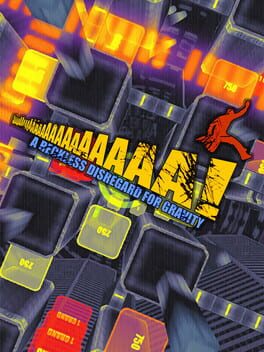


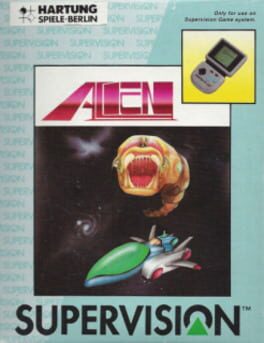



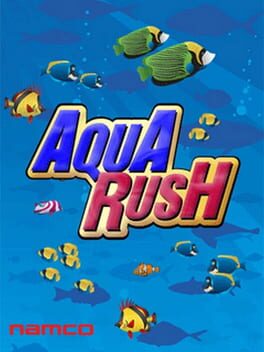
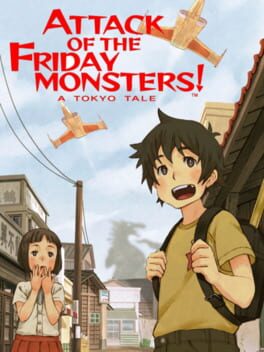
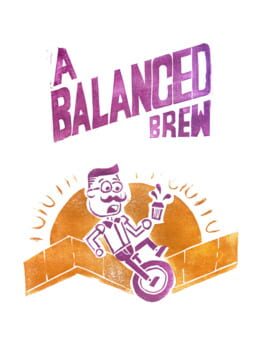
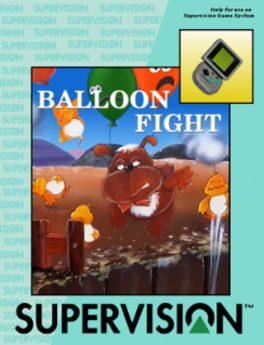
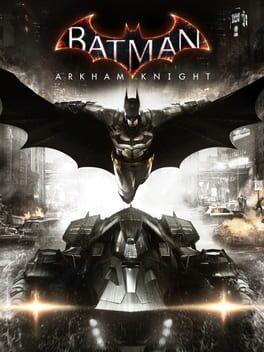
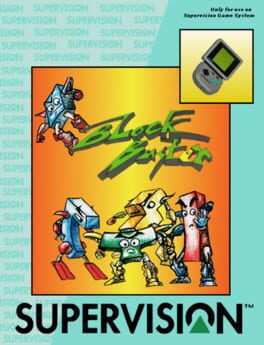

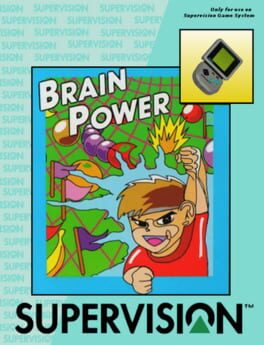
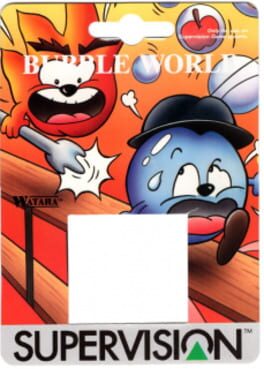
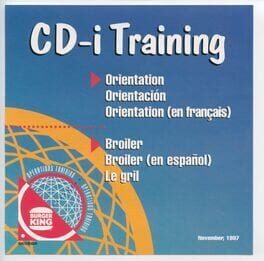
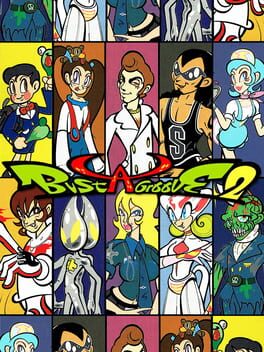

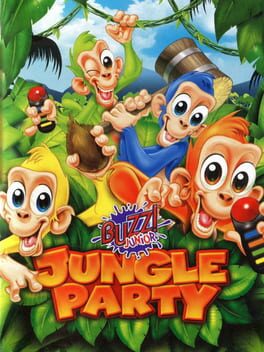
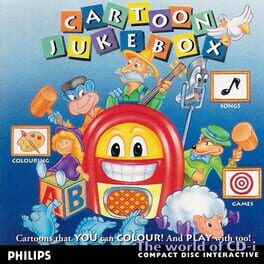
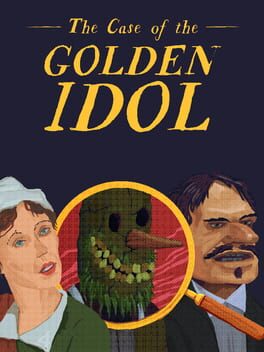
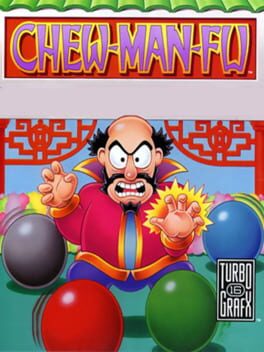
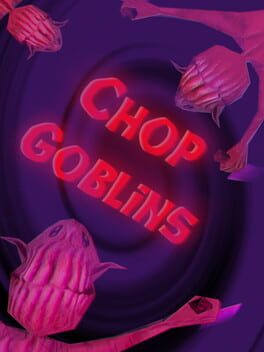
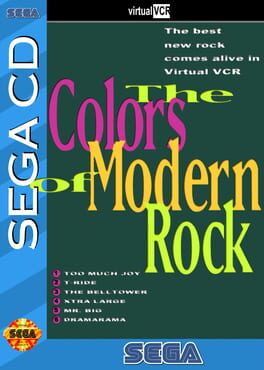
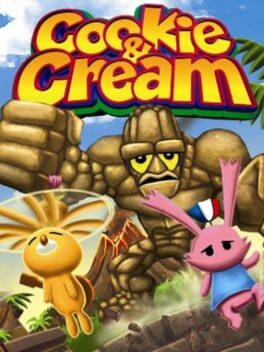

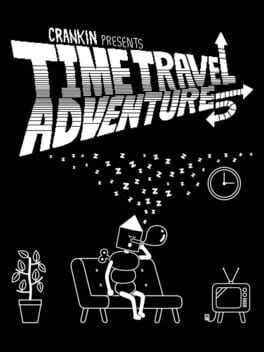
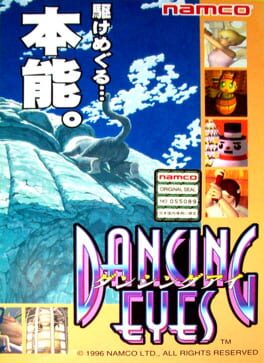
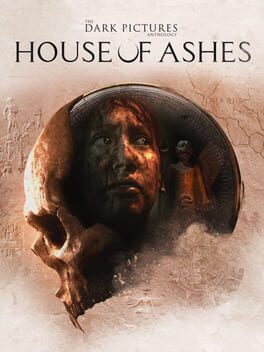

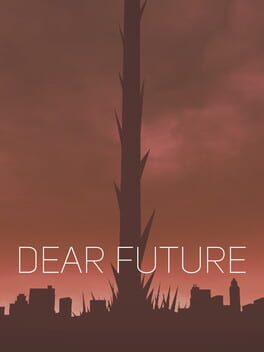


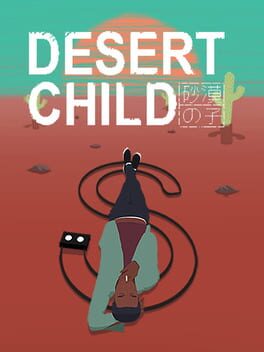

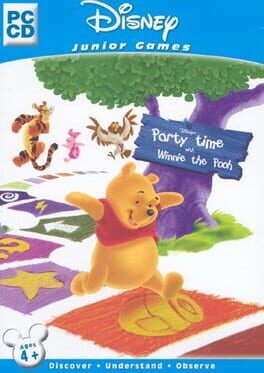


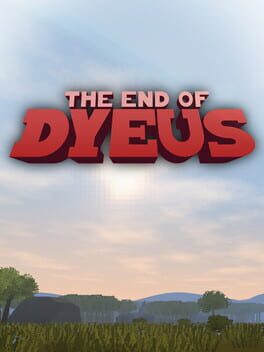
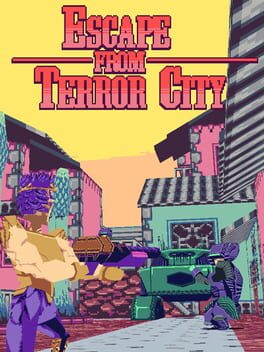

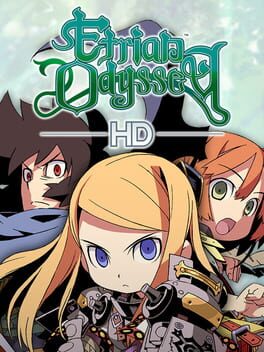
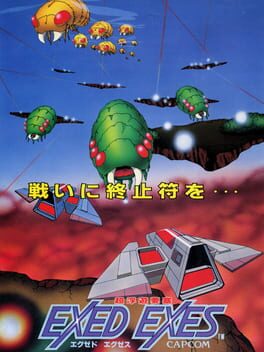


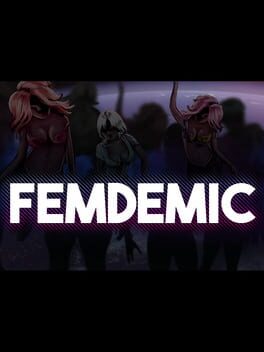


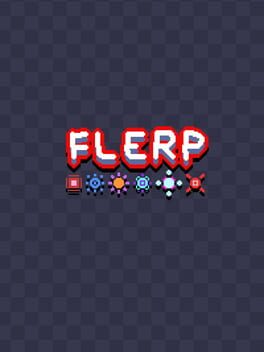


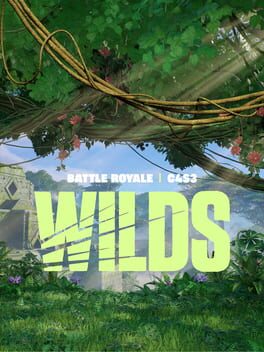



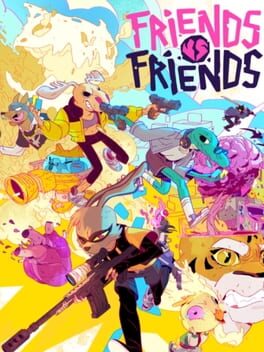

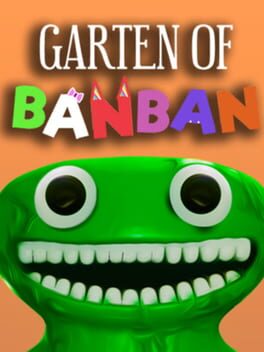
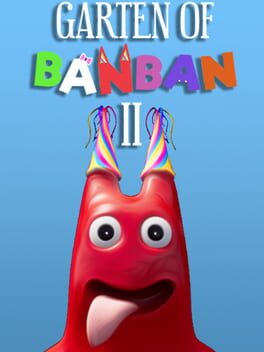
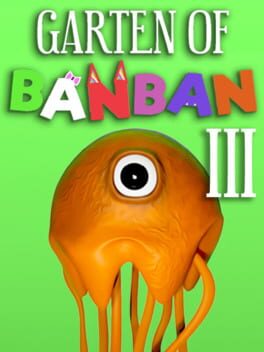
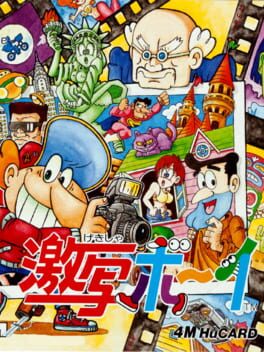


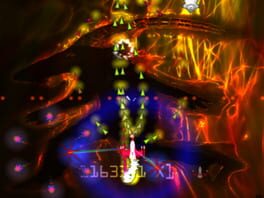


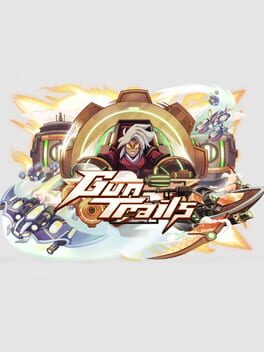



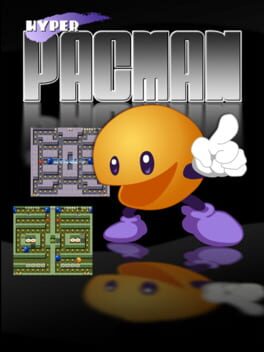


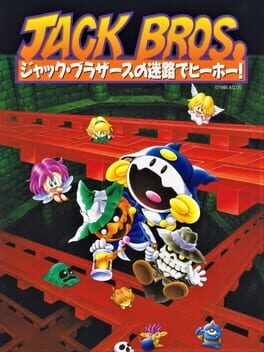

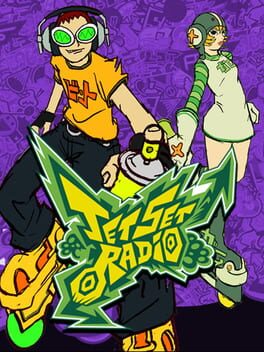

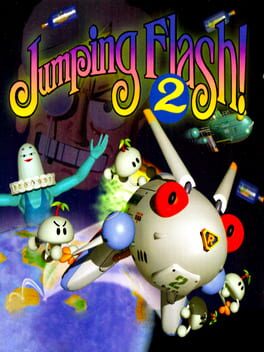
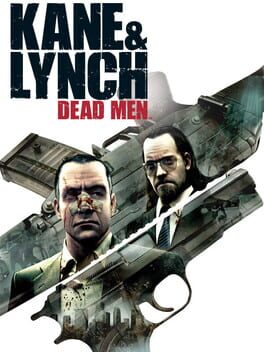


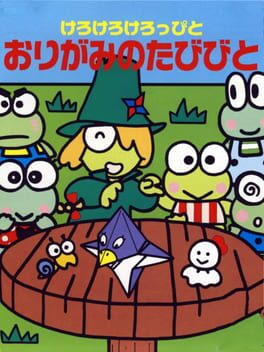
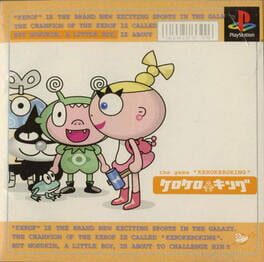





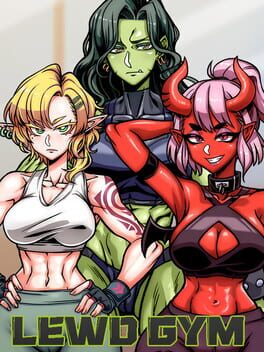

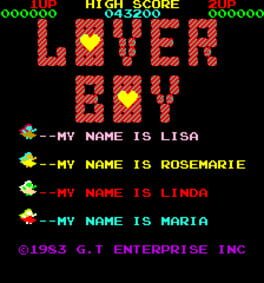

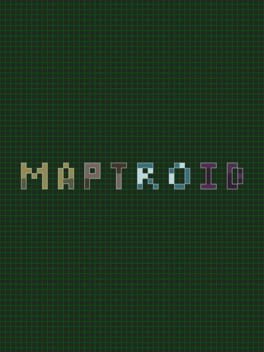
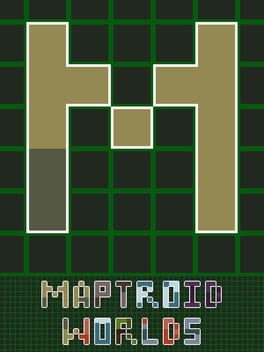
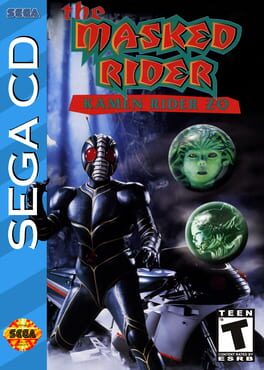
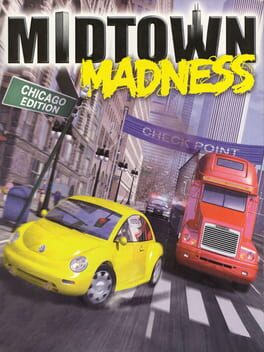
DeemonAndGames
4 months ago
For real tho I'm so glad you made this, I didn't even know you made a follow up to your 177 review so early in the year until I just saw it here, same things goes for a ton of reviews I hadn't checked out till now. Amazing year full of amazing reviews, that's something that I could say about a ton of the talented people on here (which is a lot) but your works are always a fantastic read and an inspiration for me and I'm sure also for many others. Excellent work!